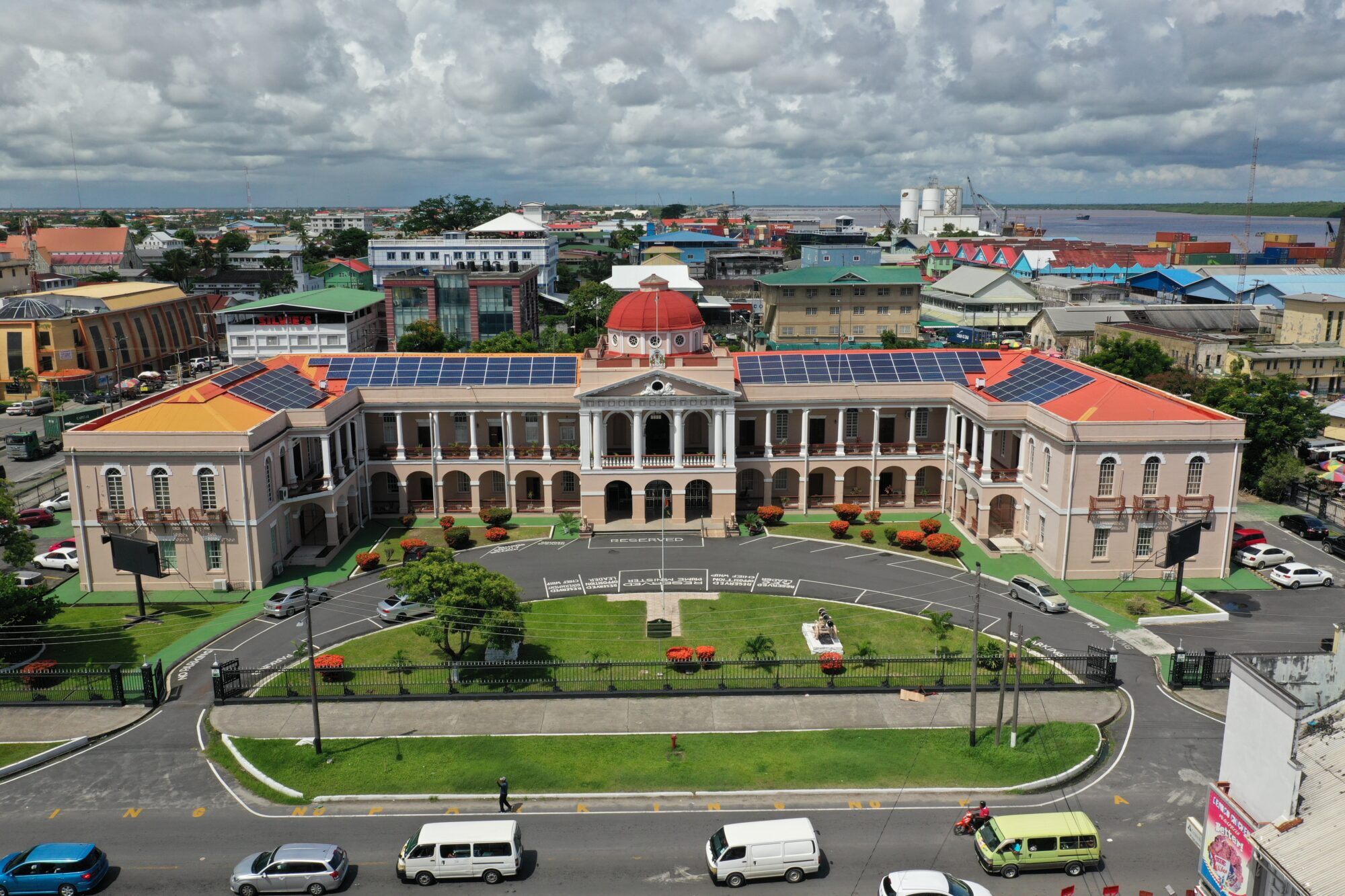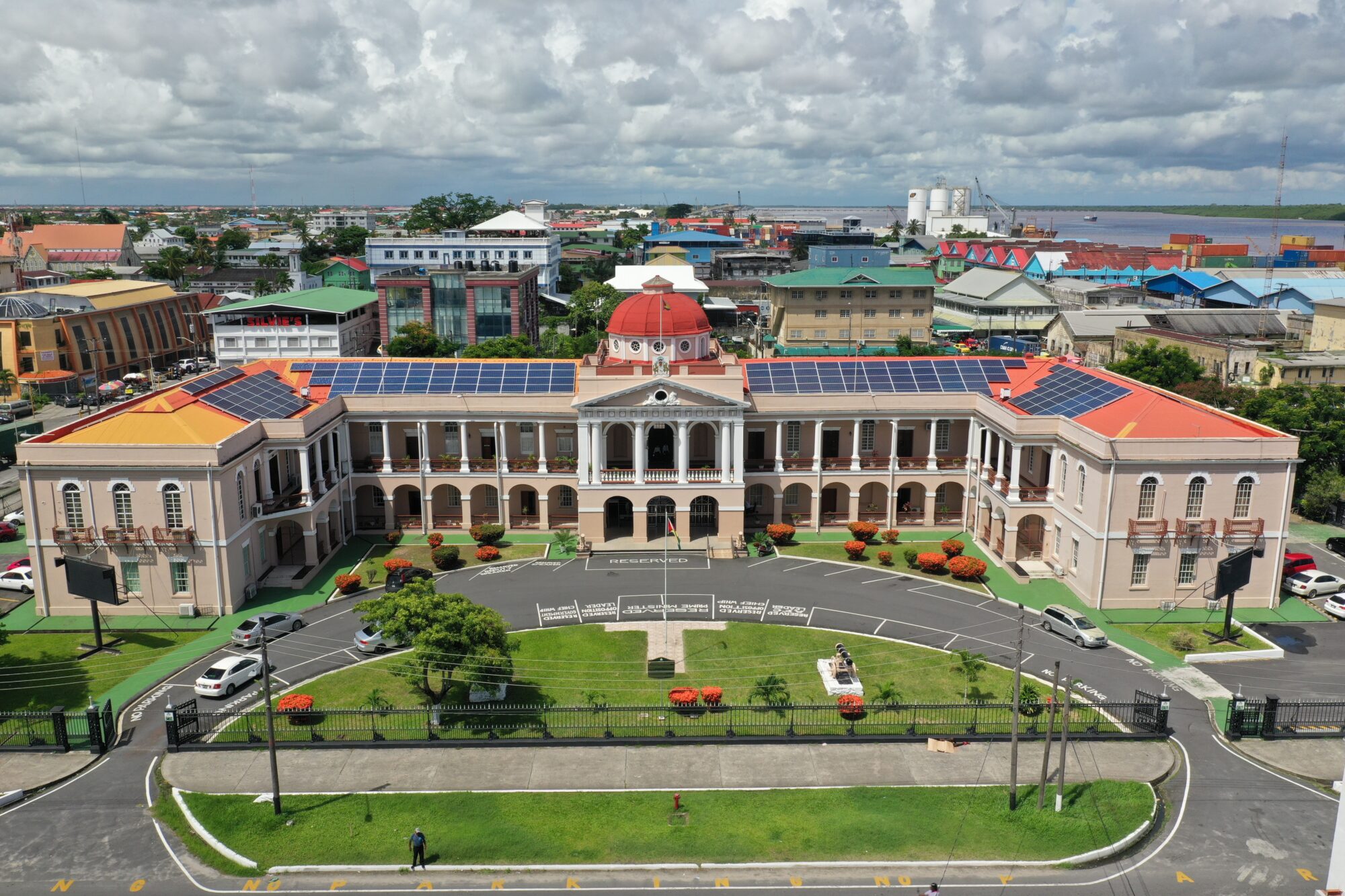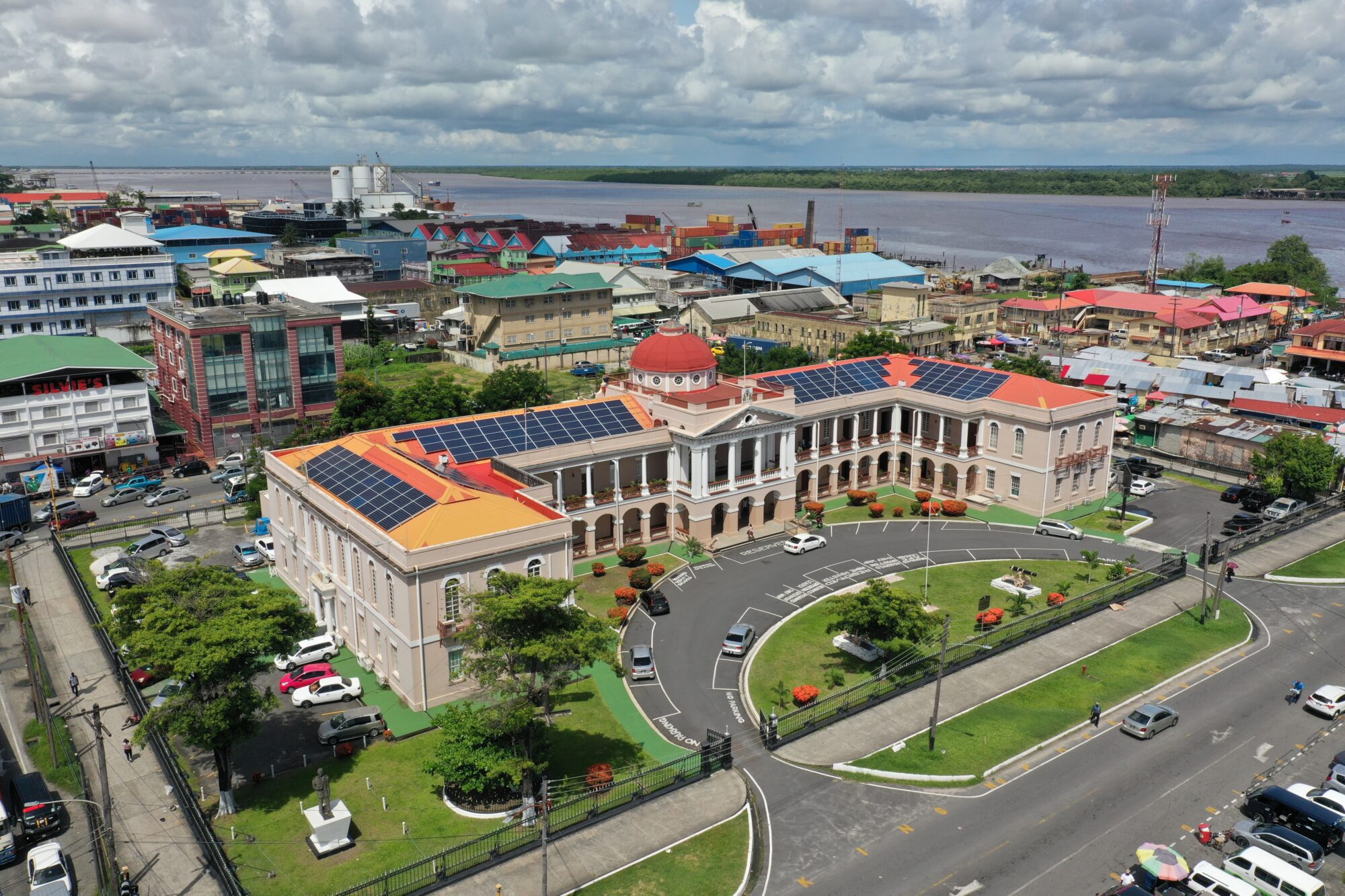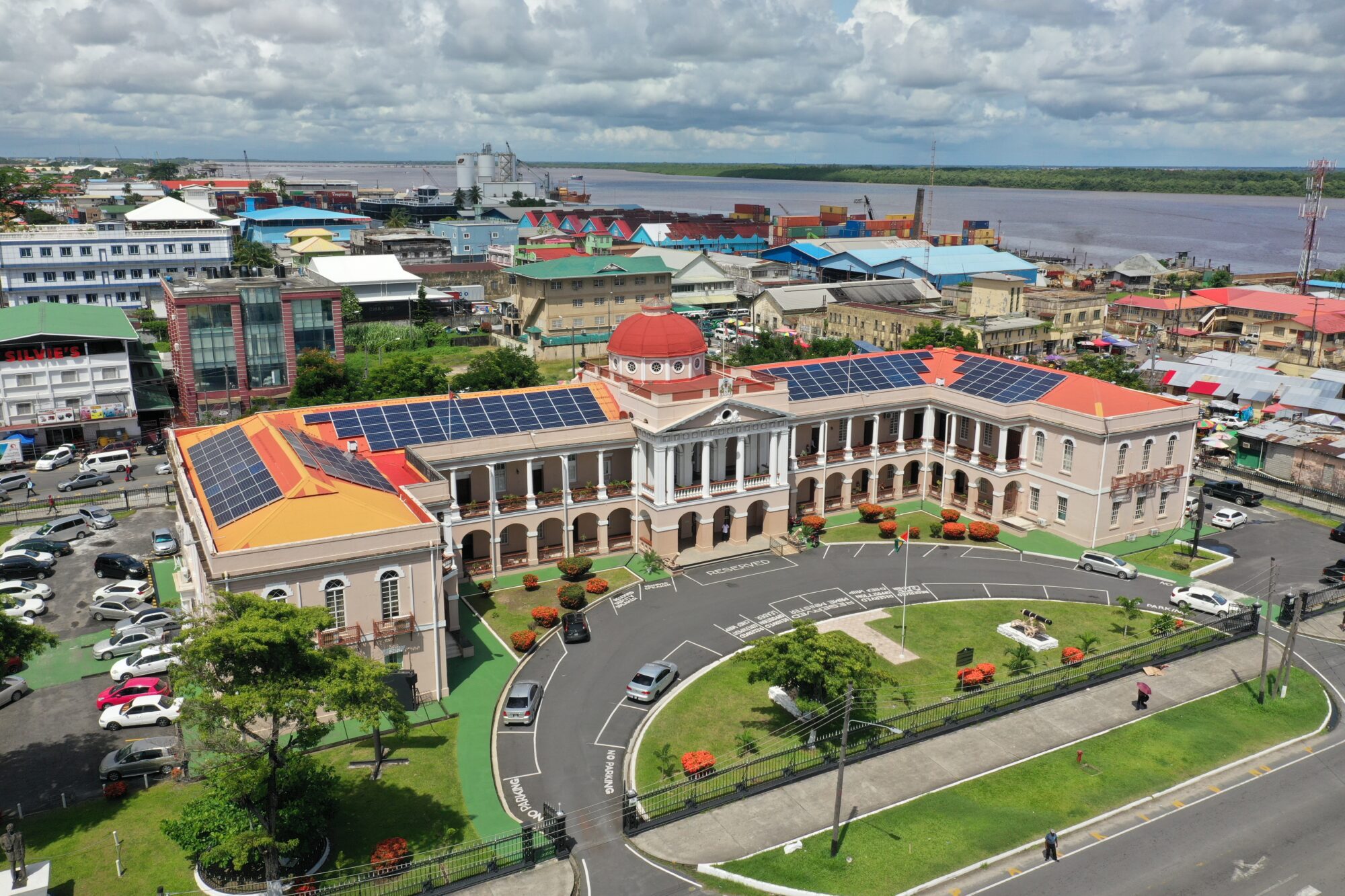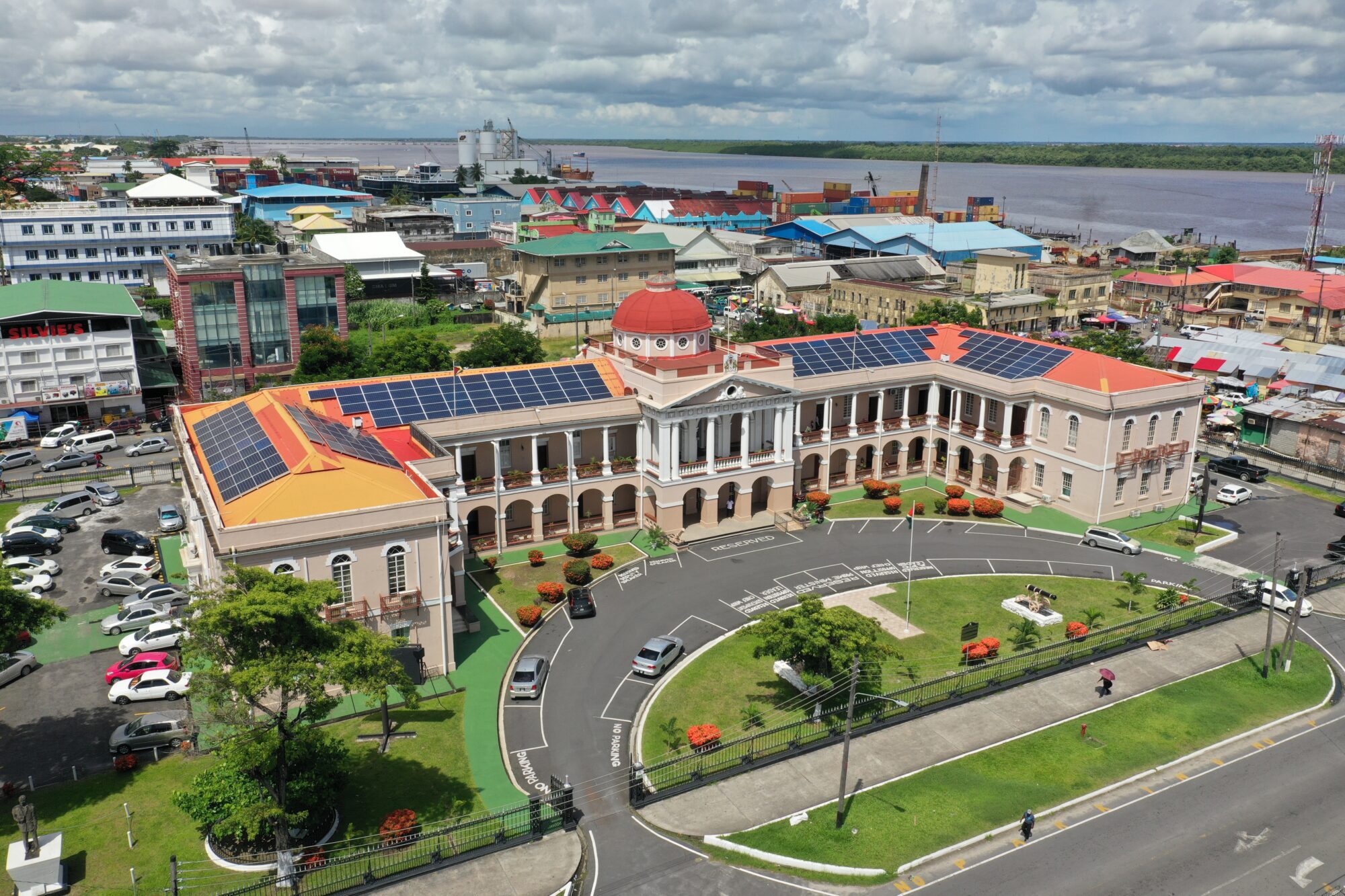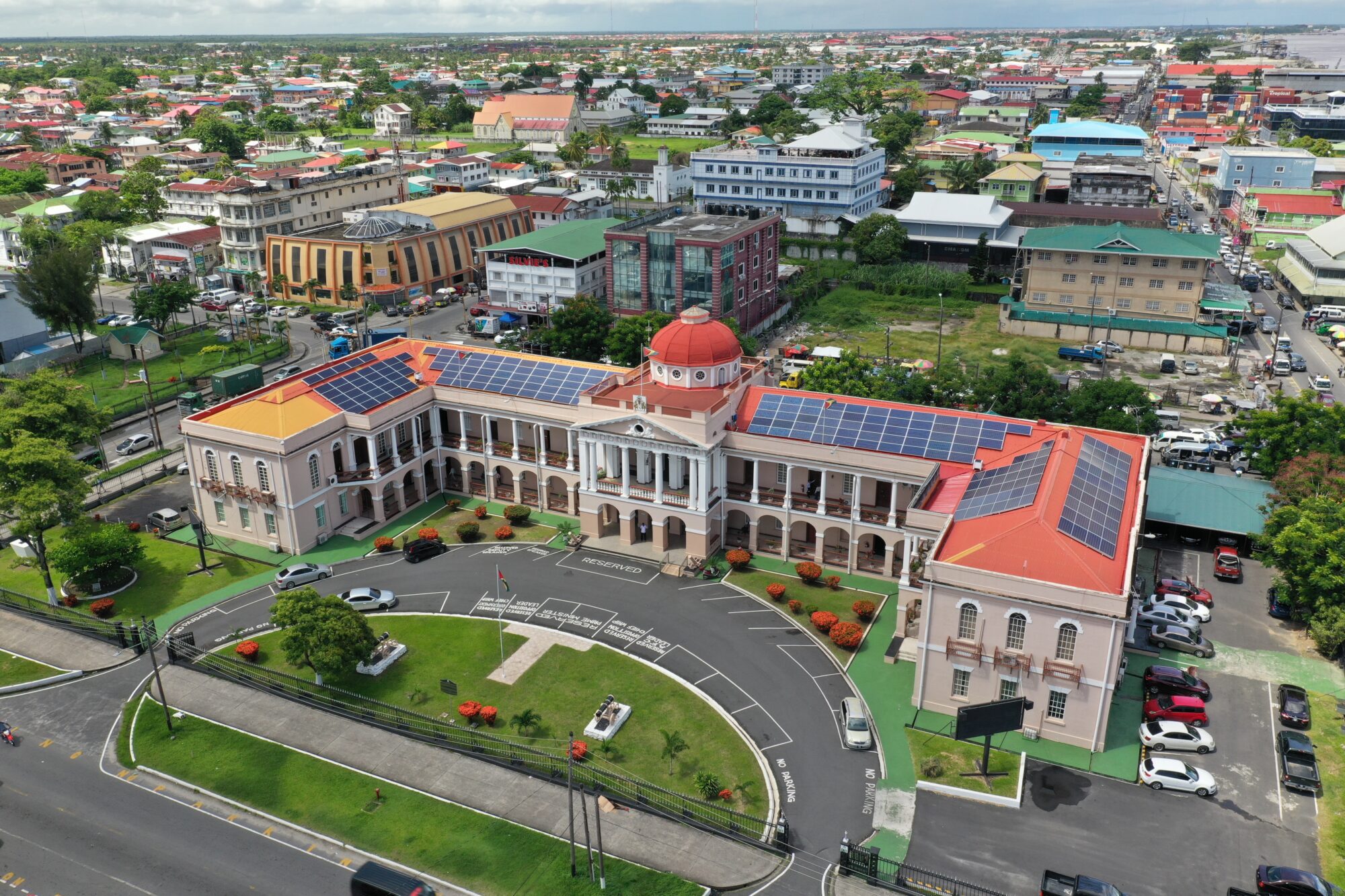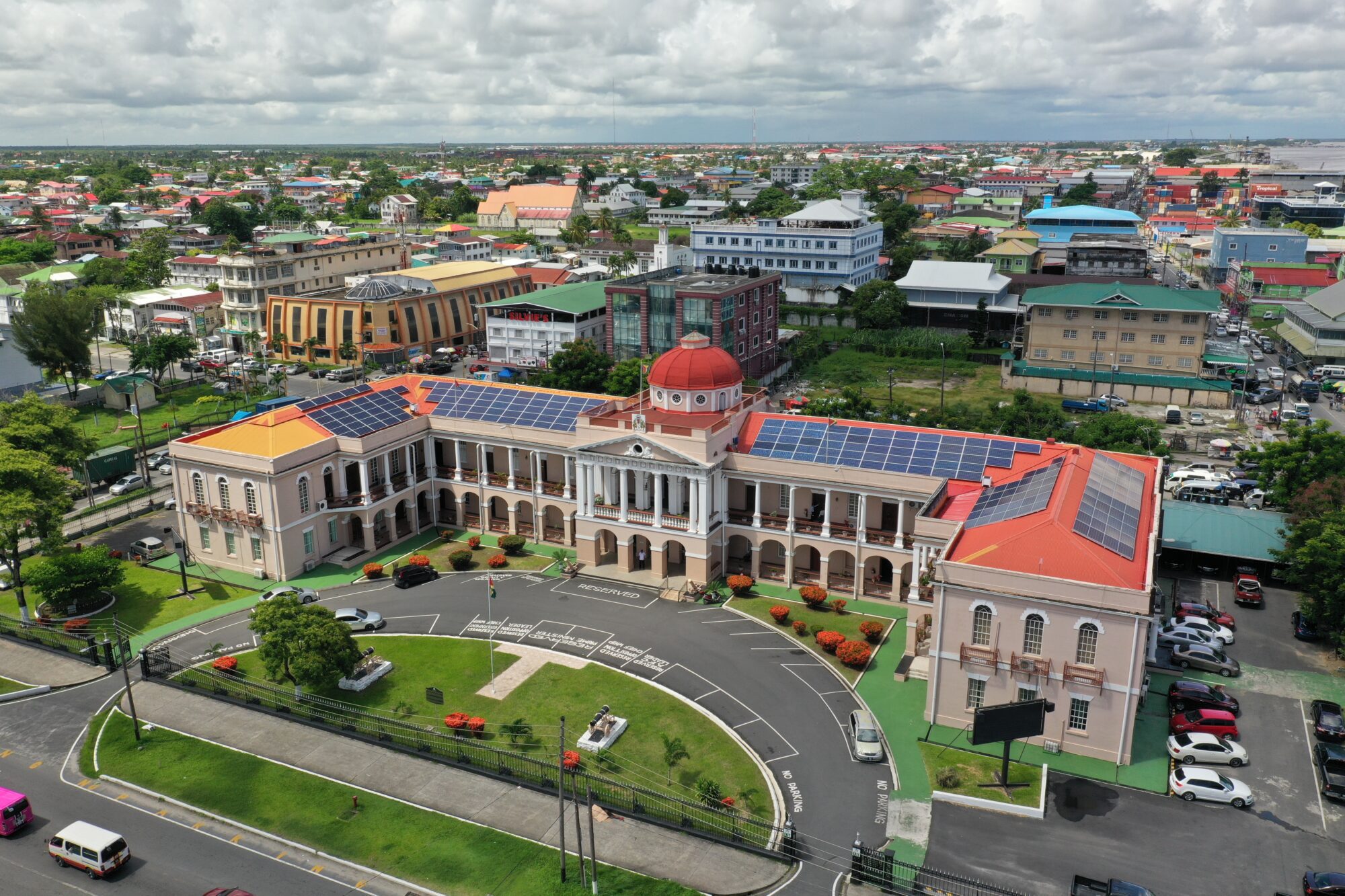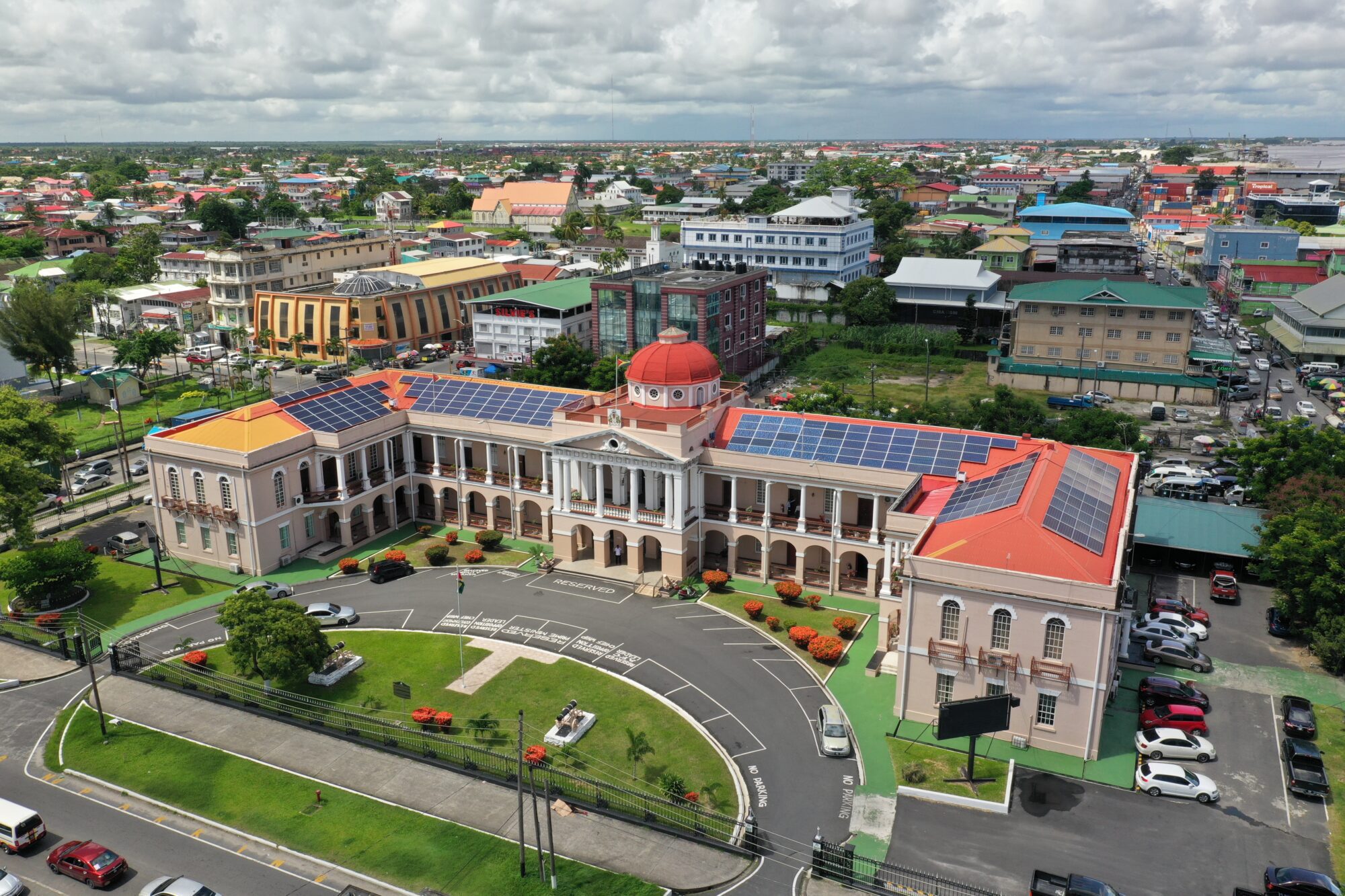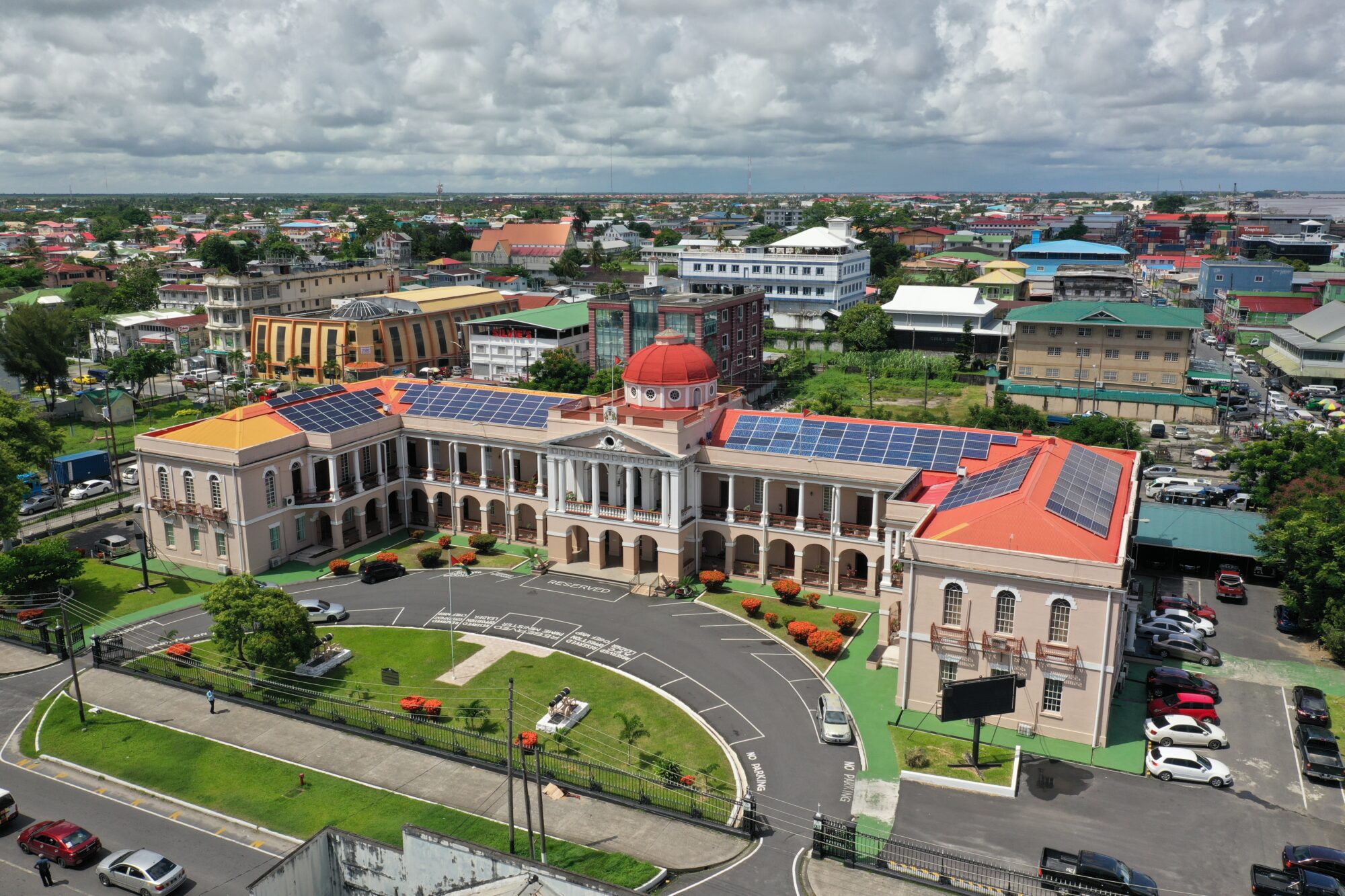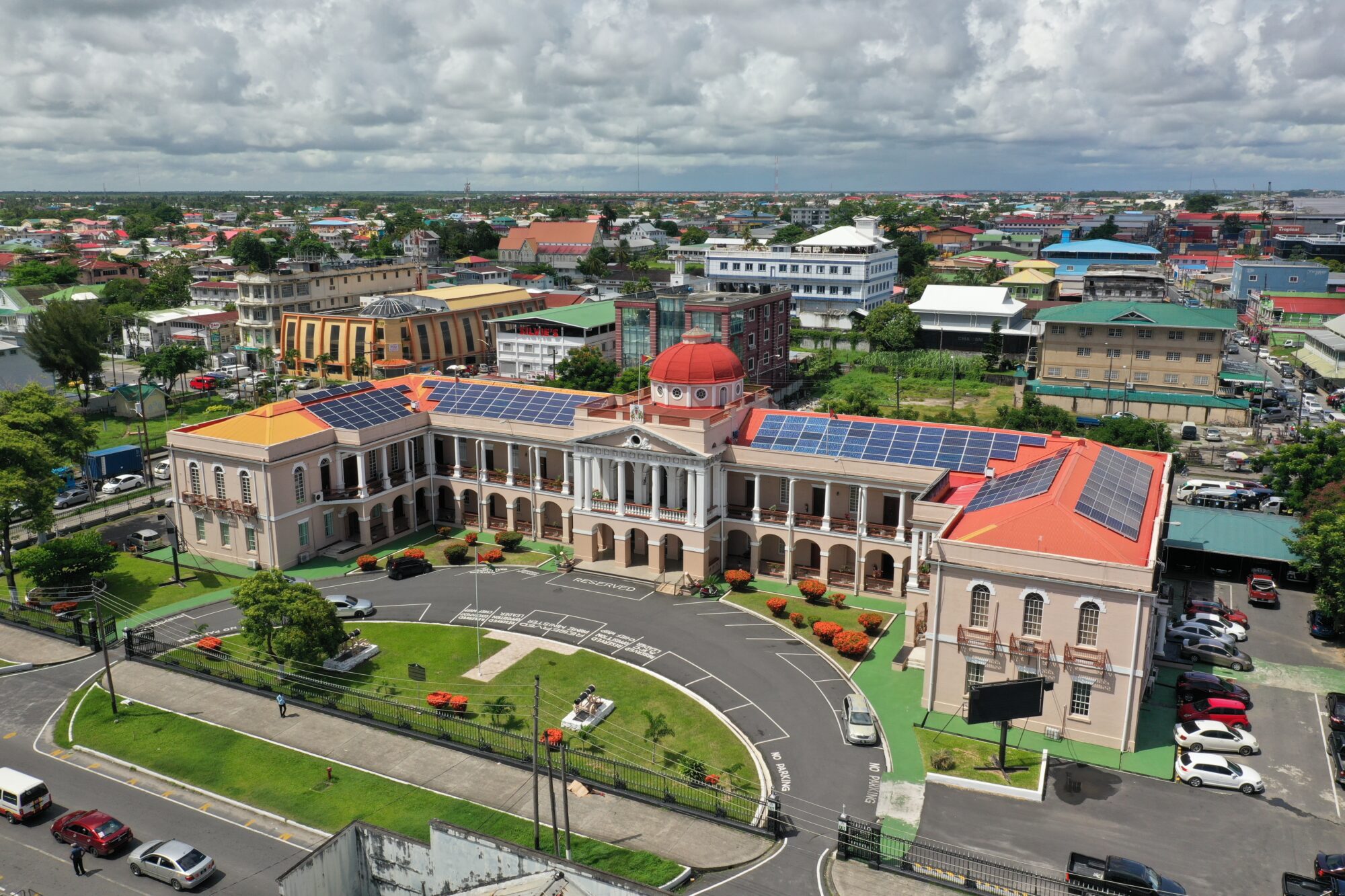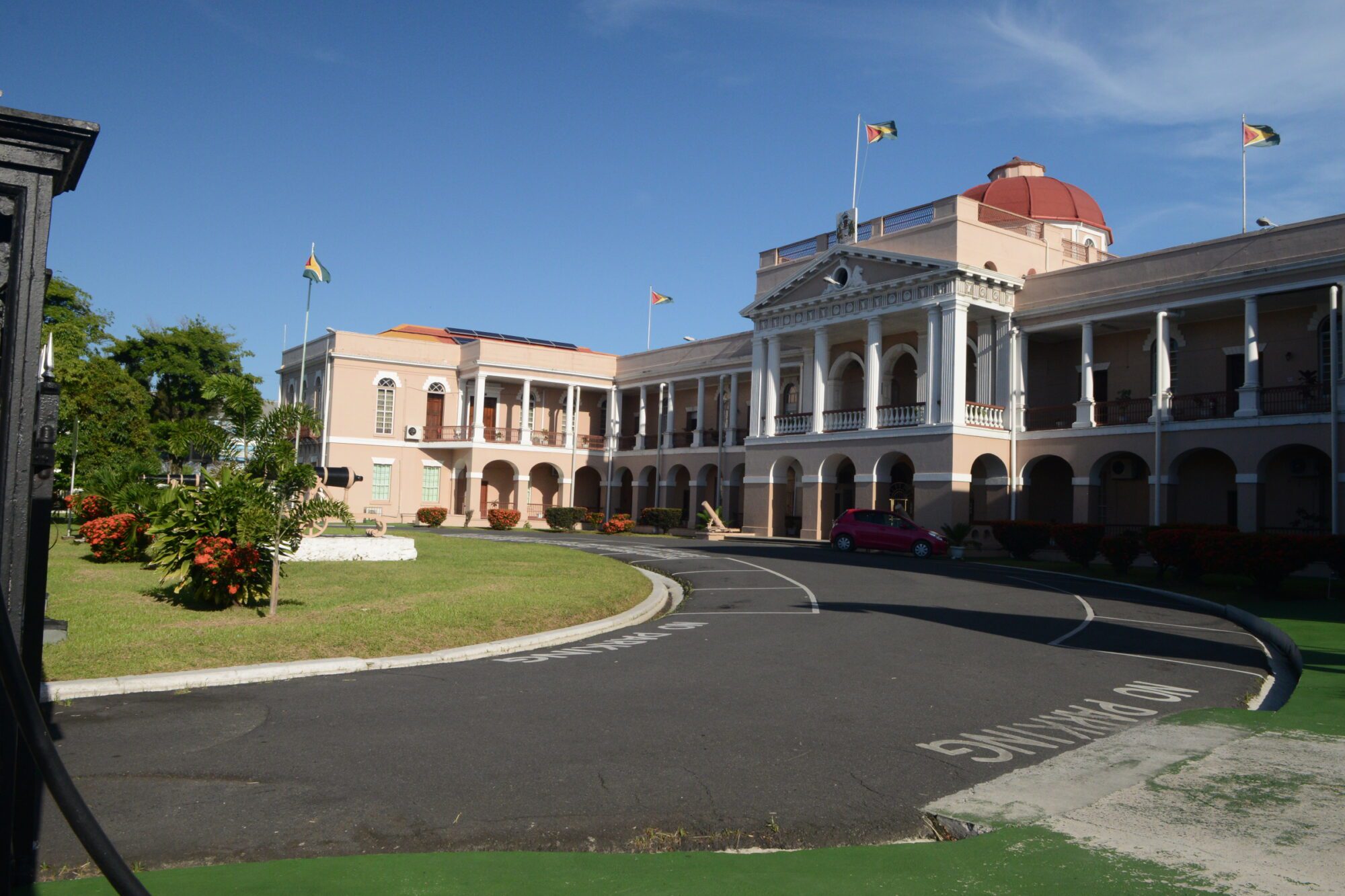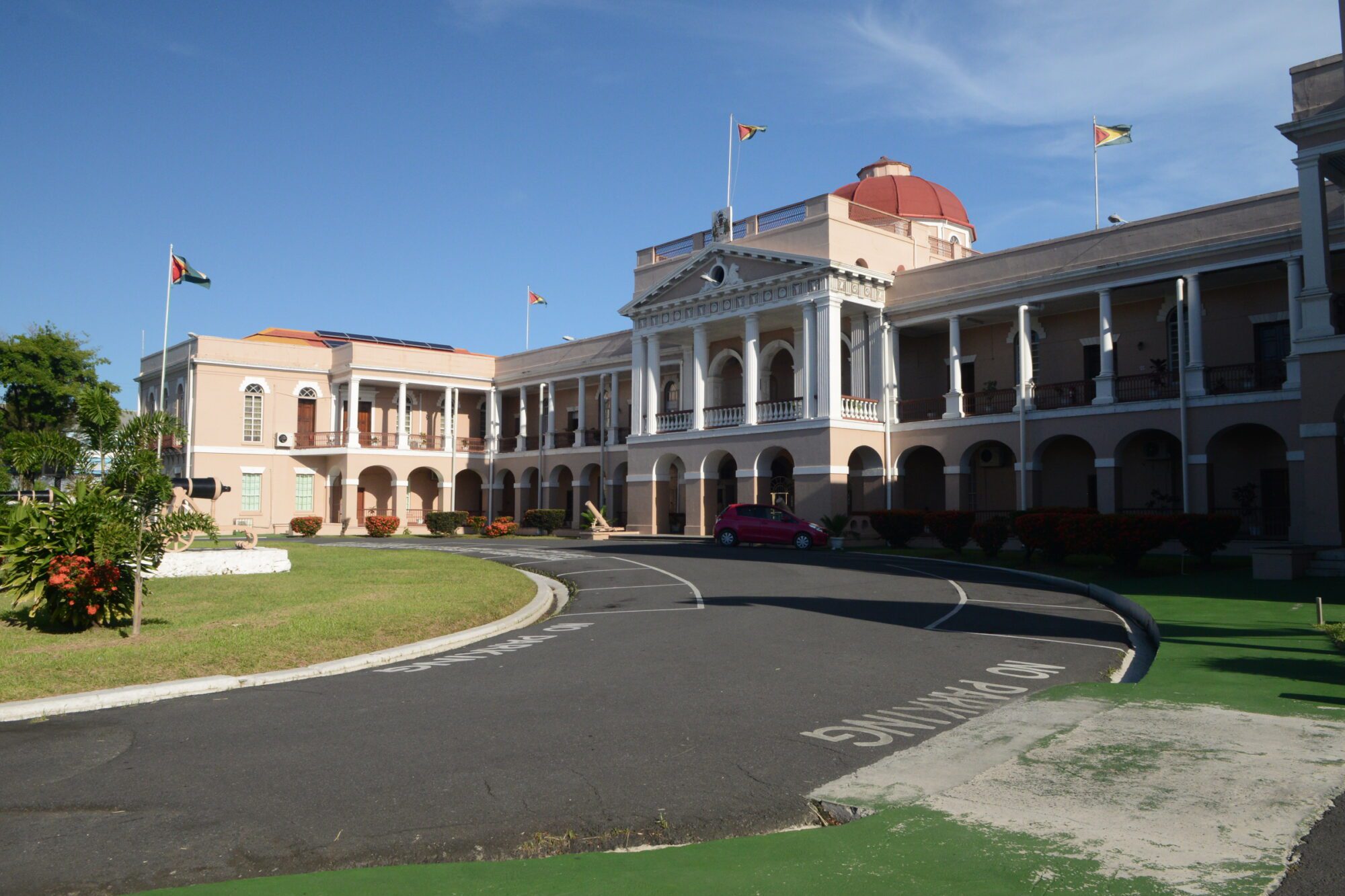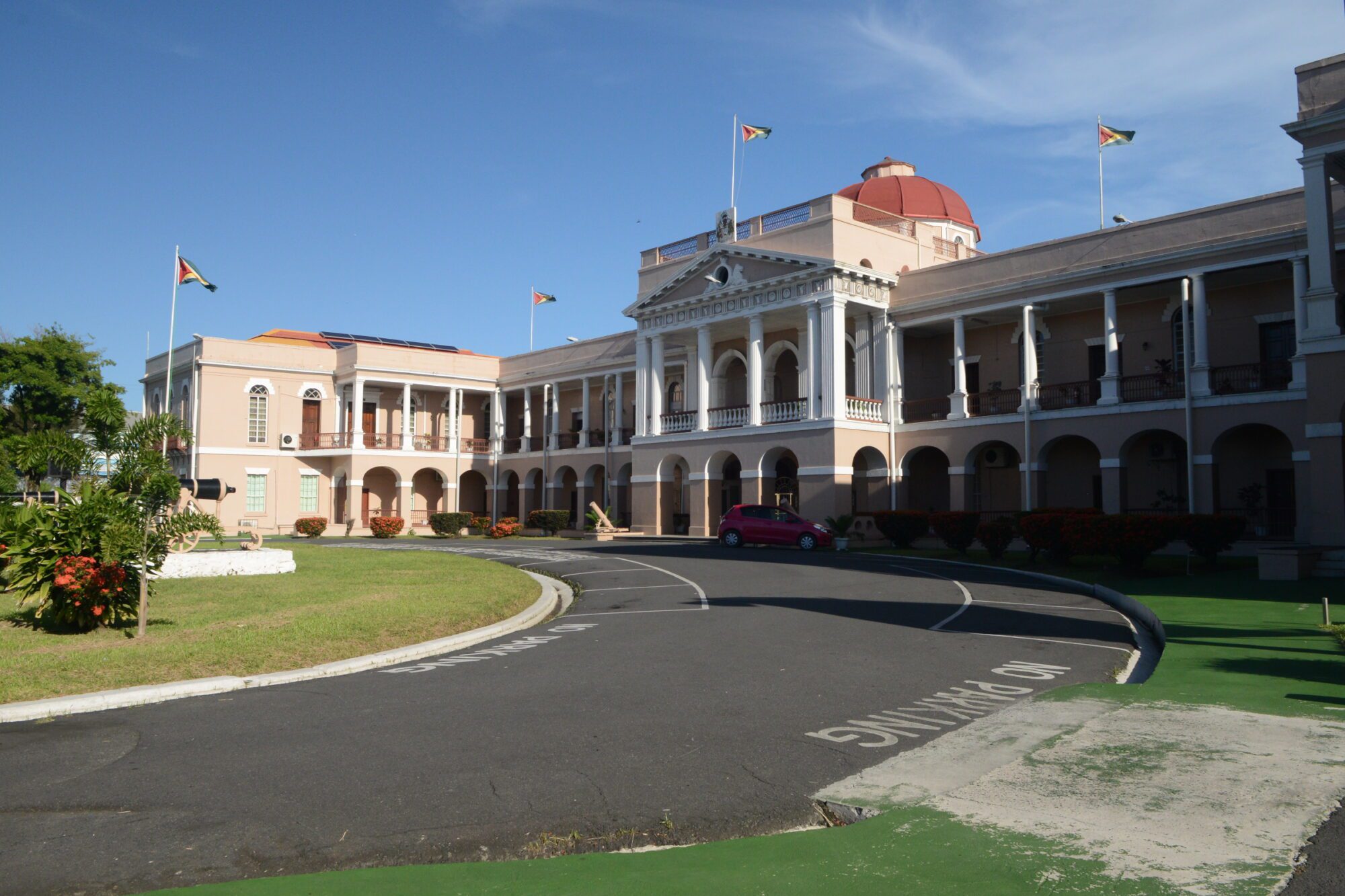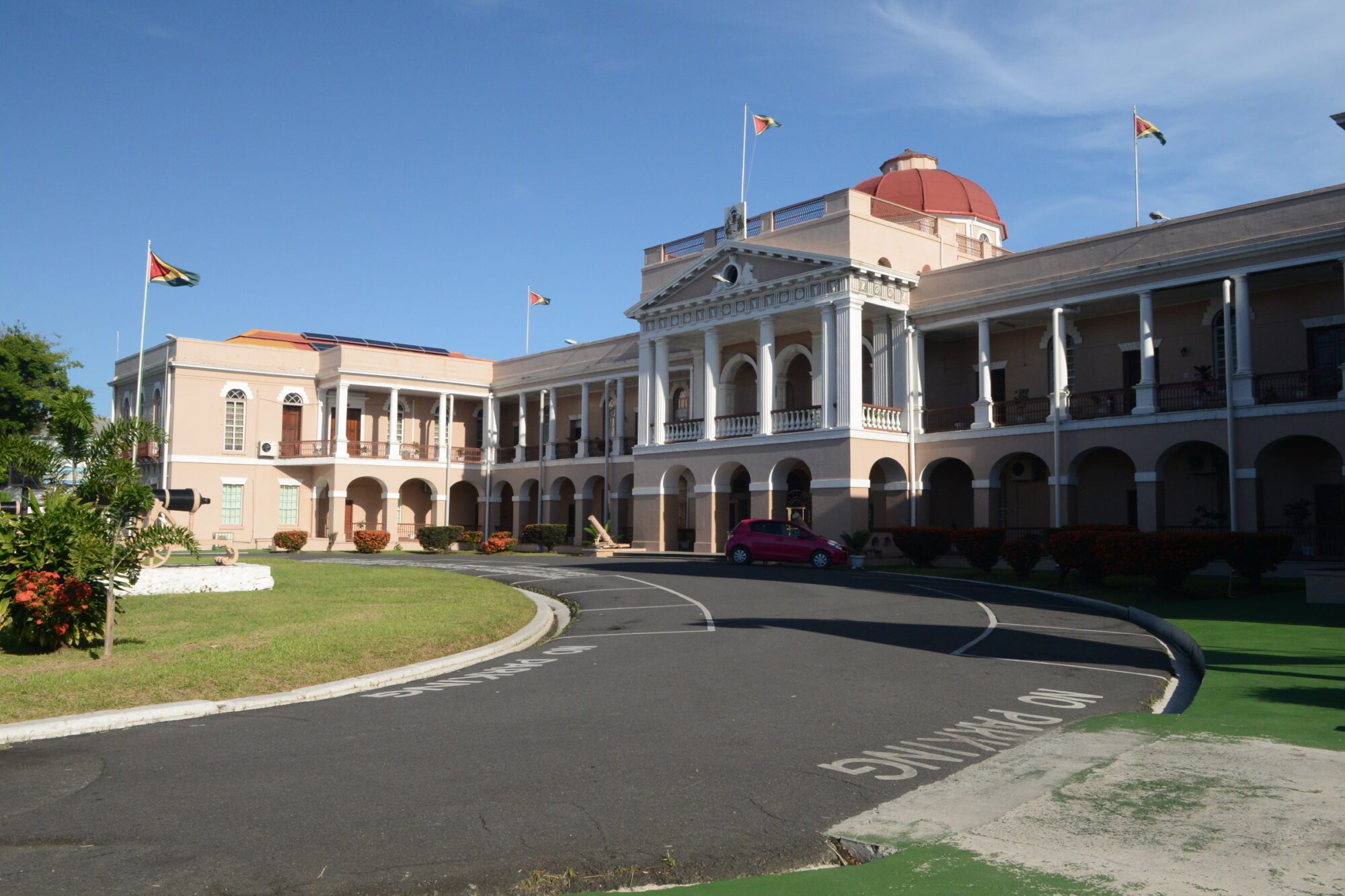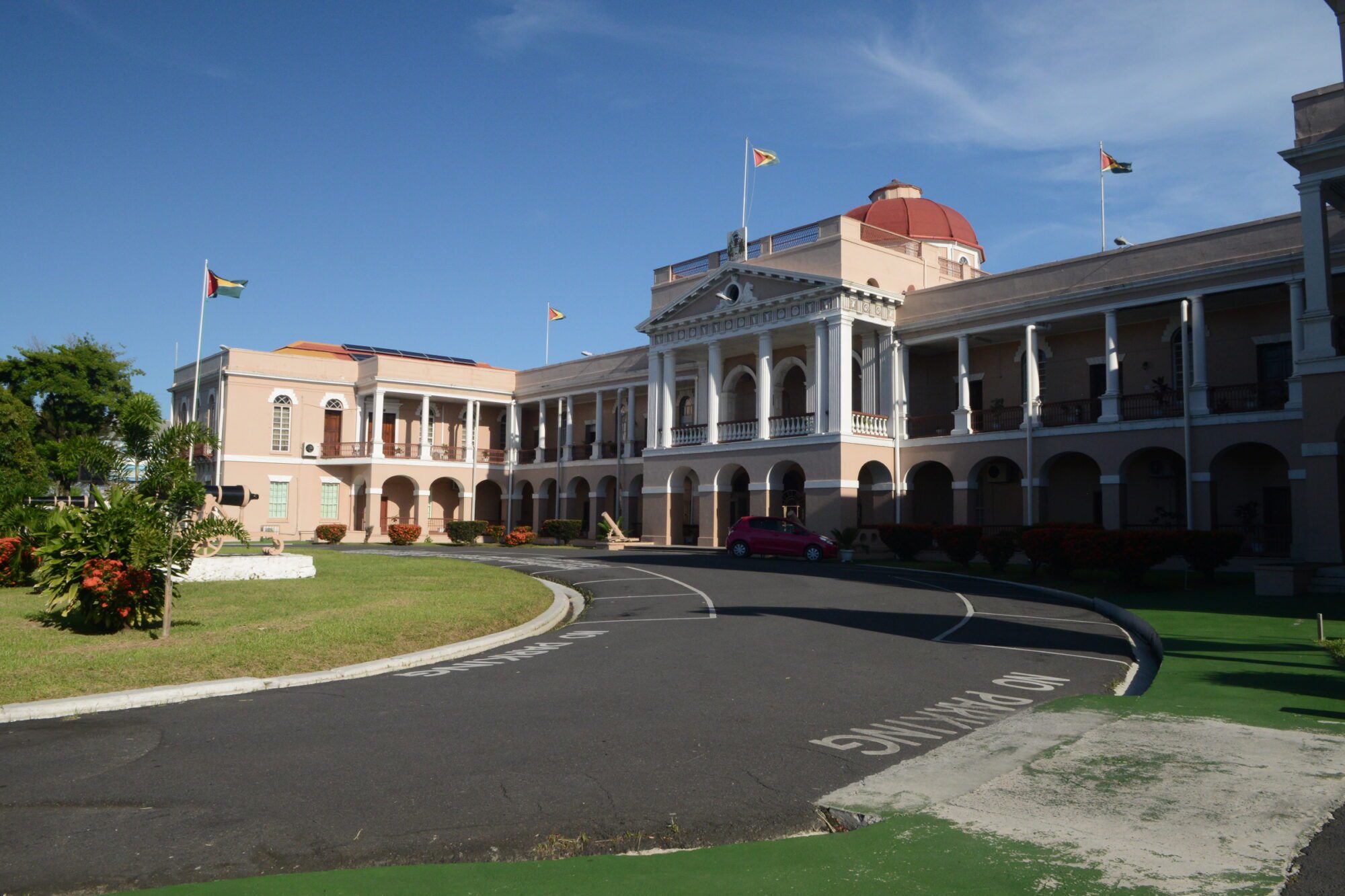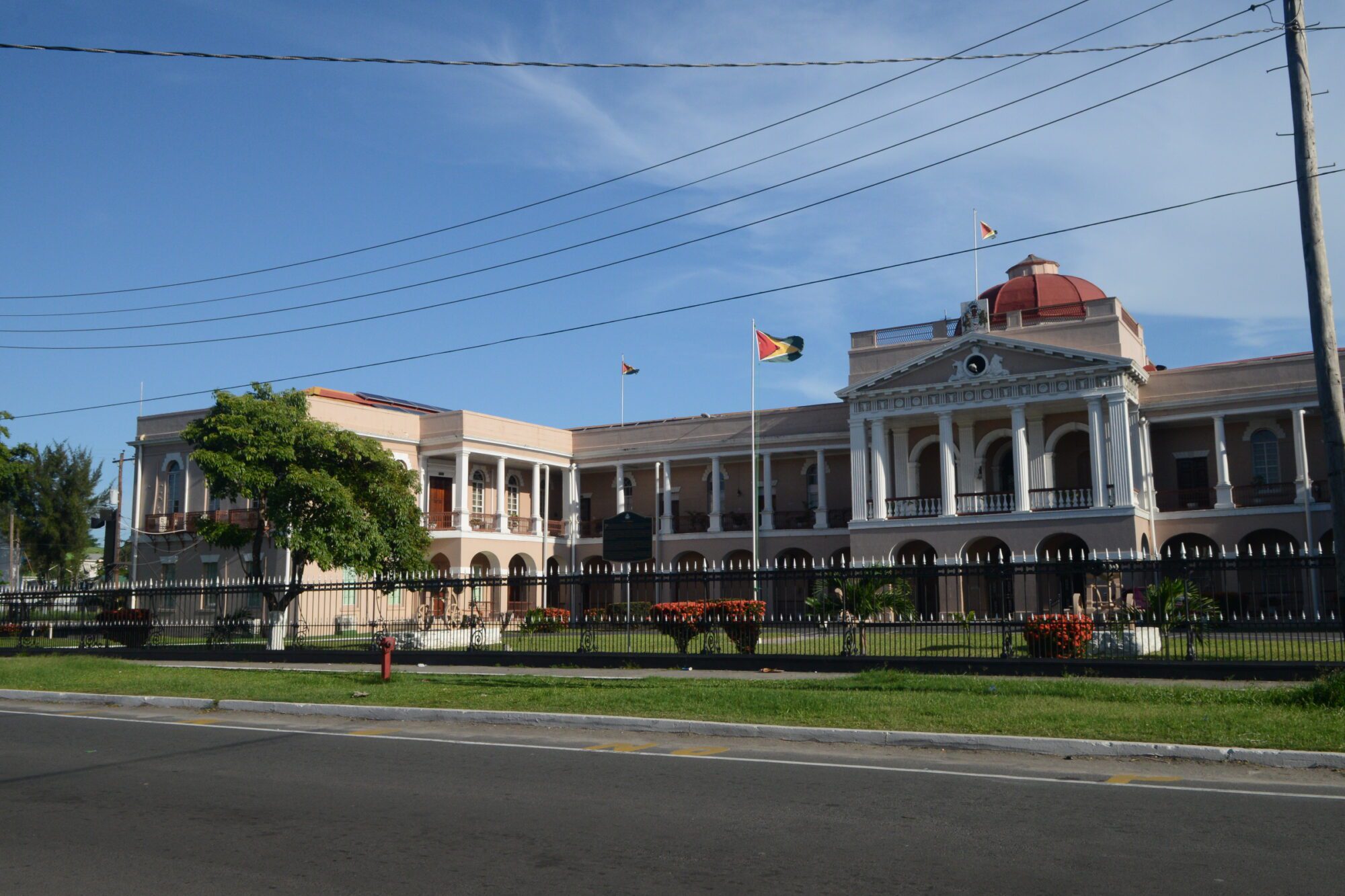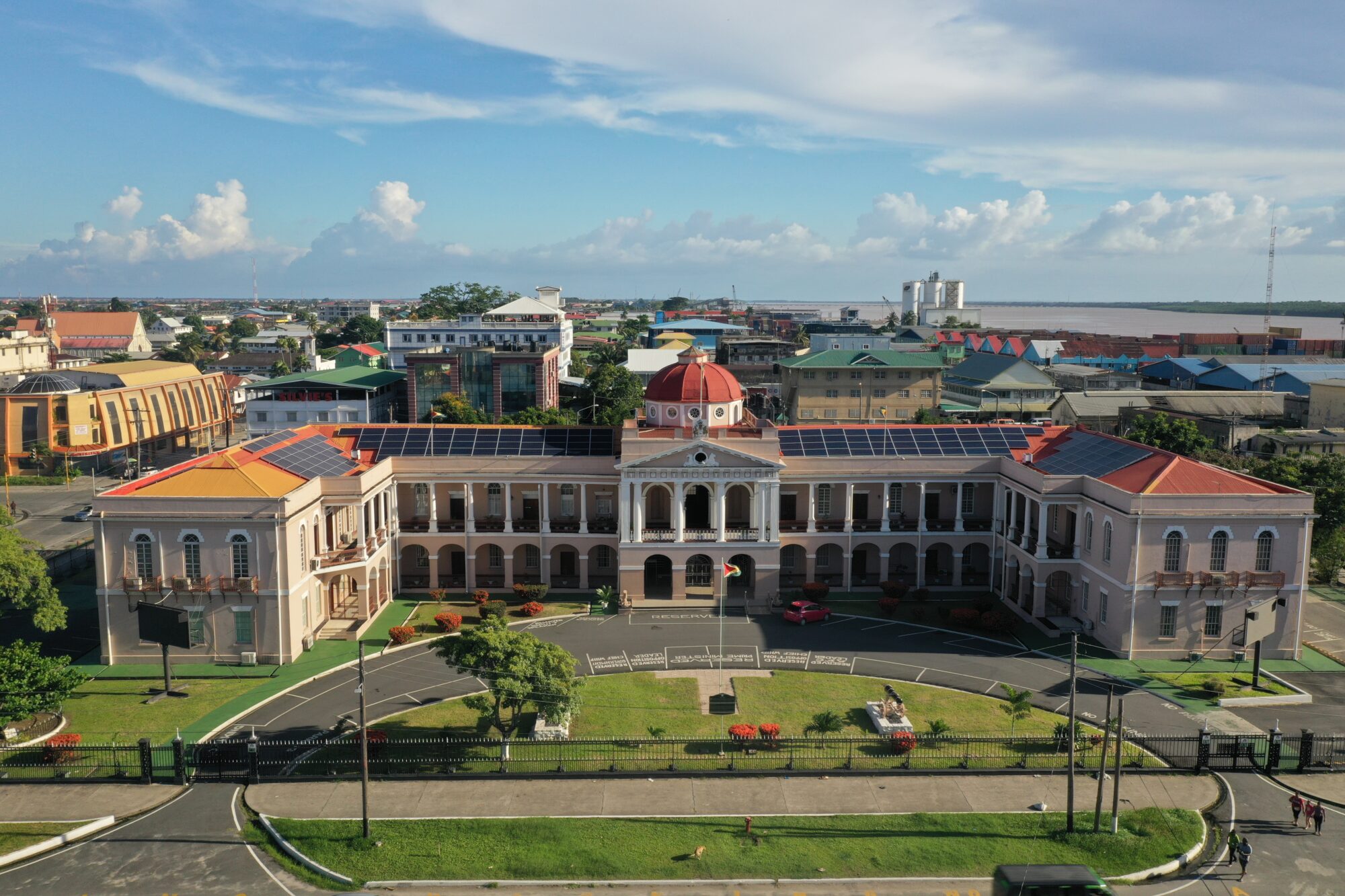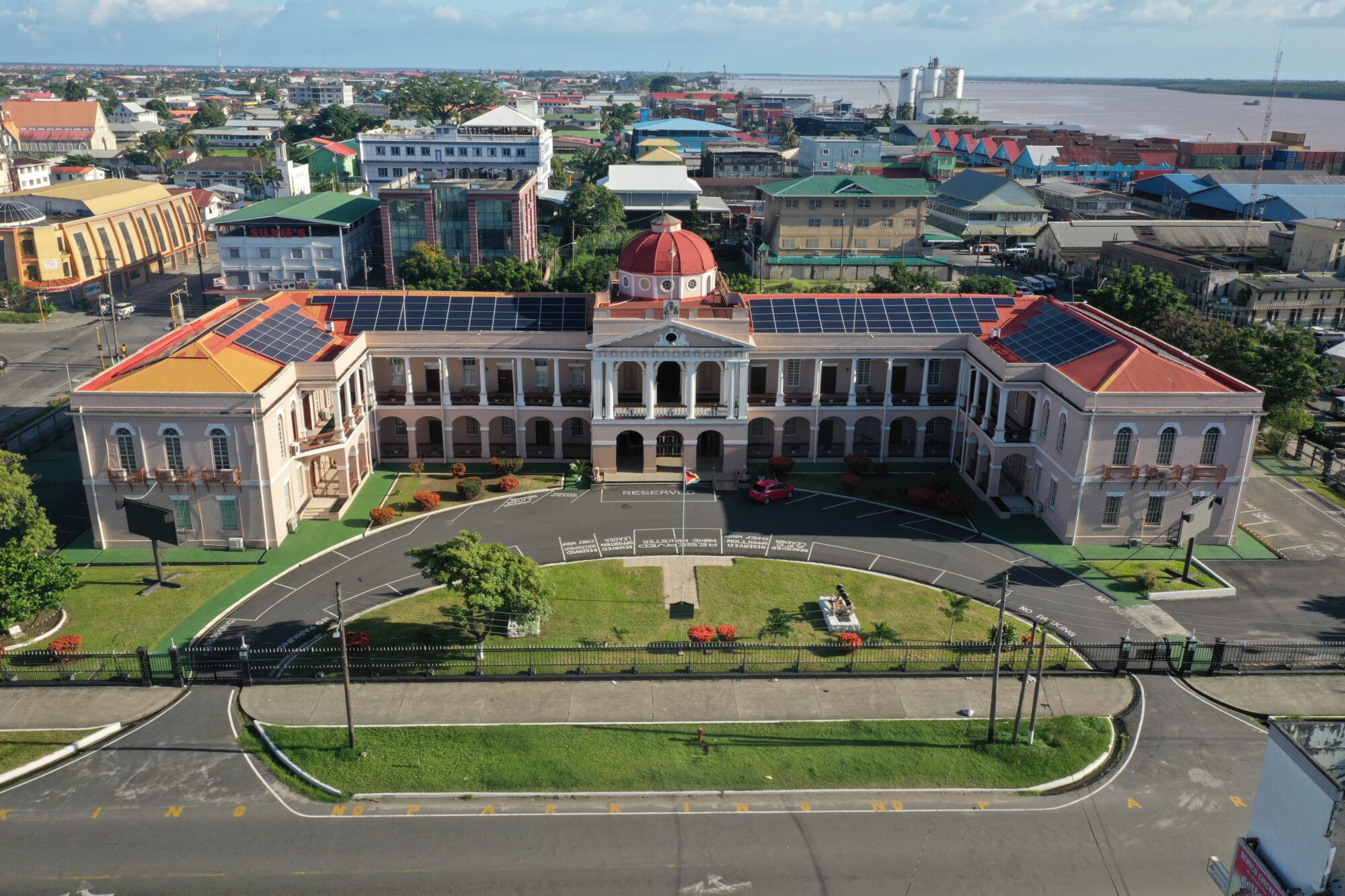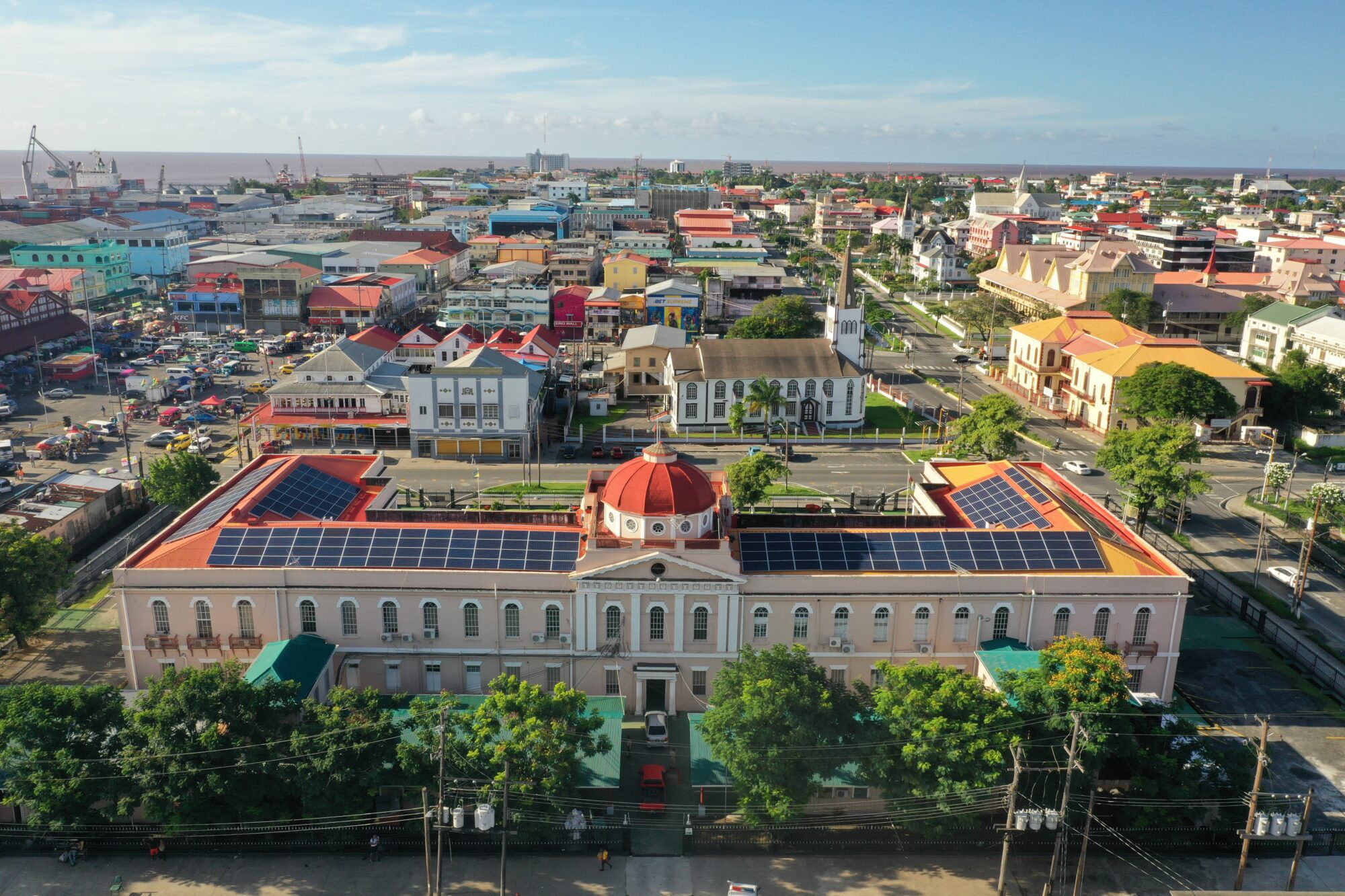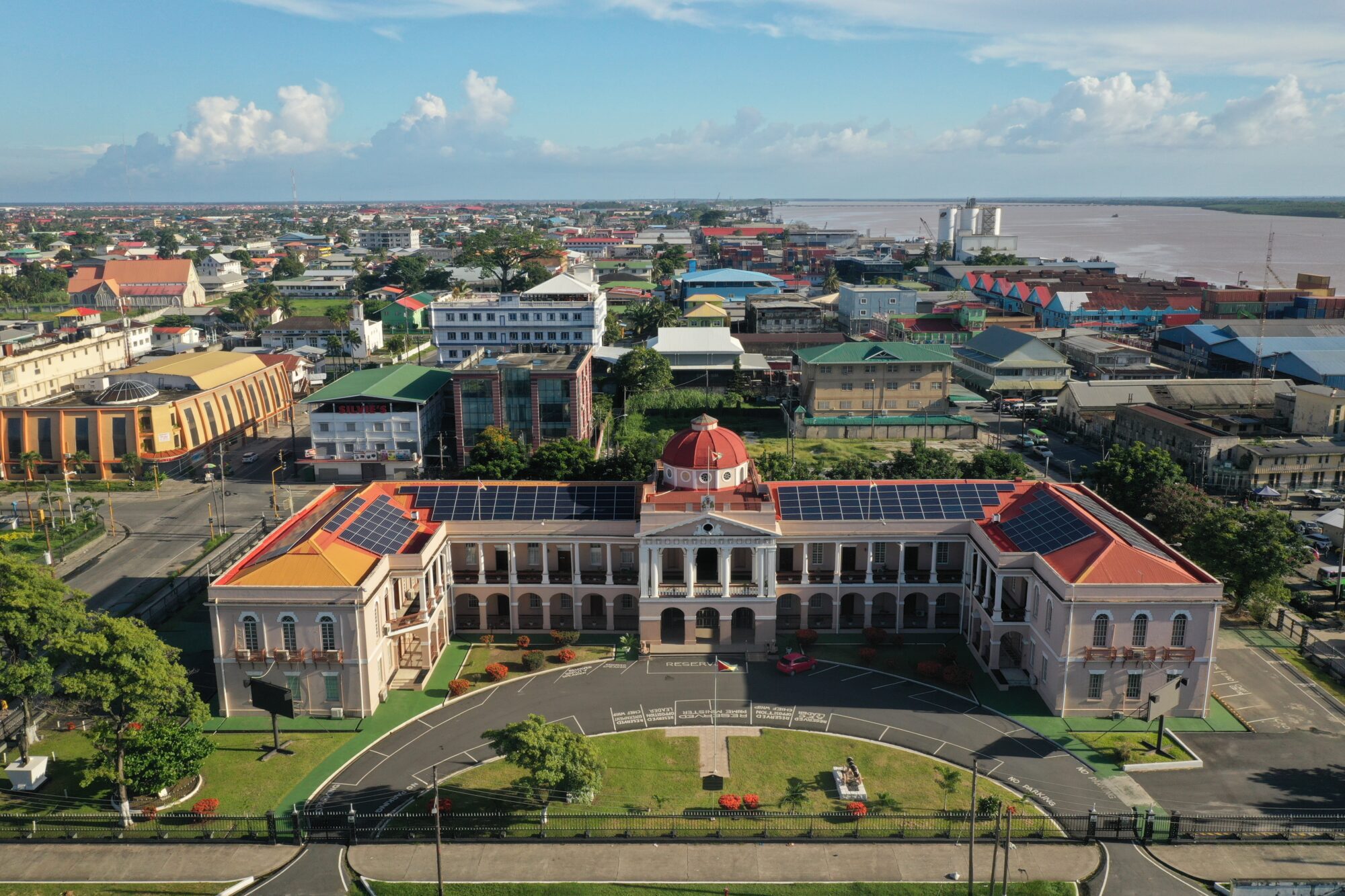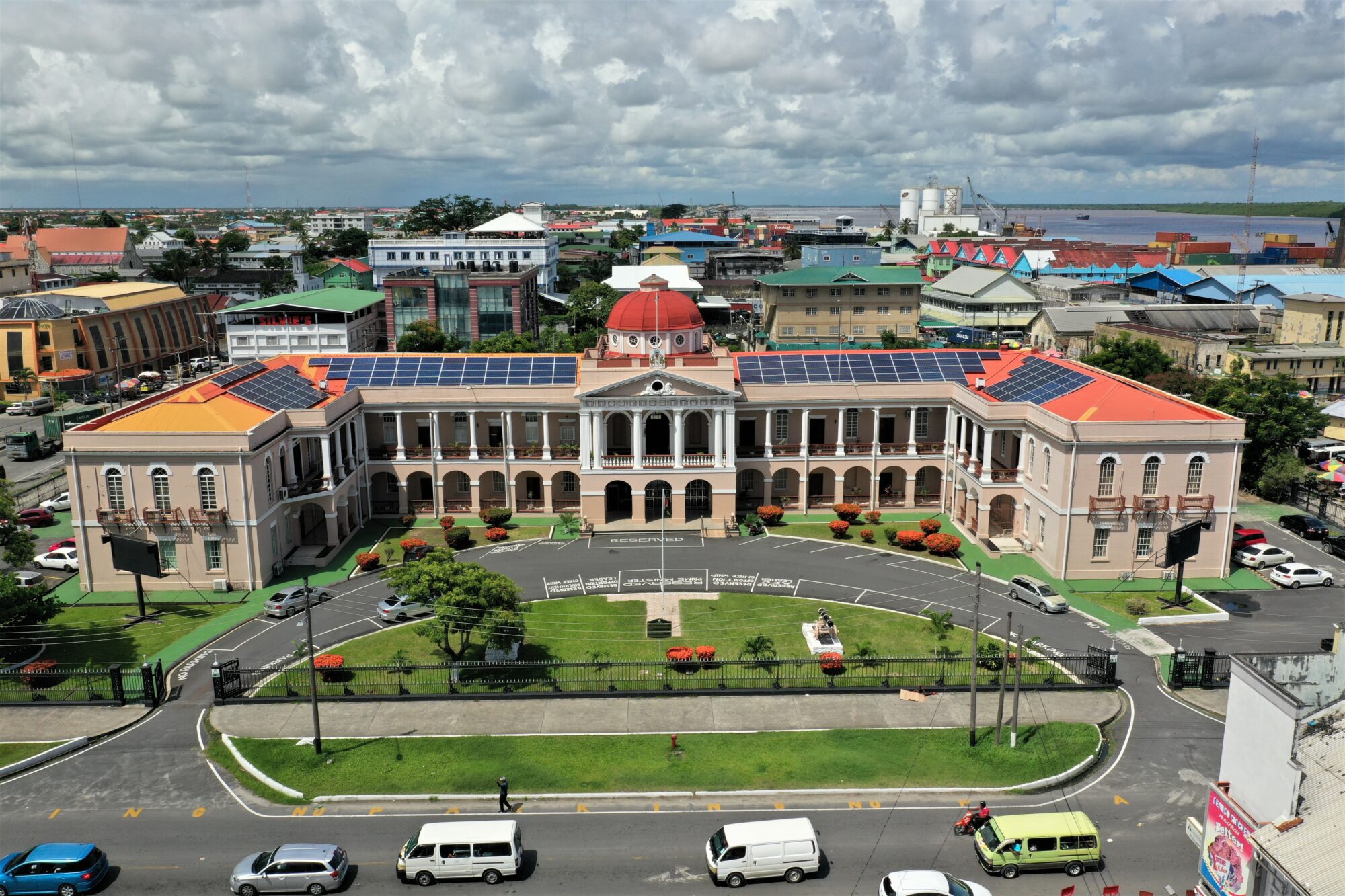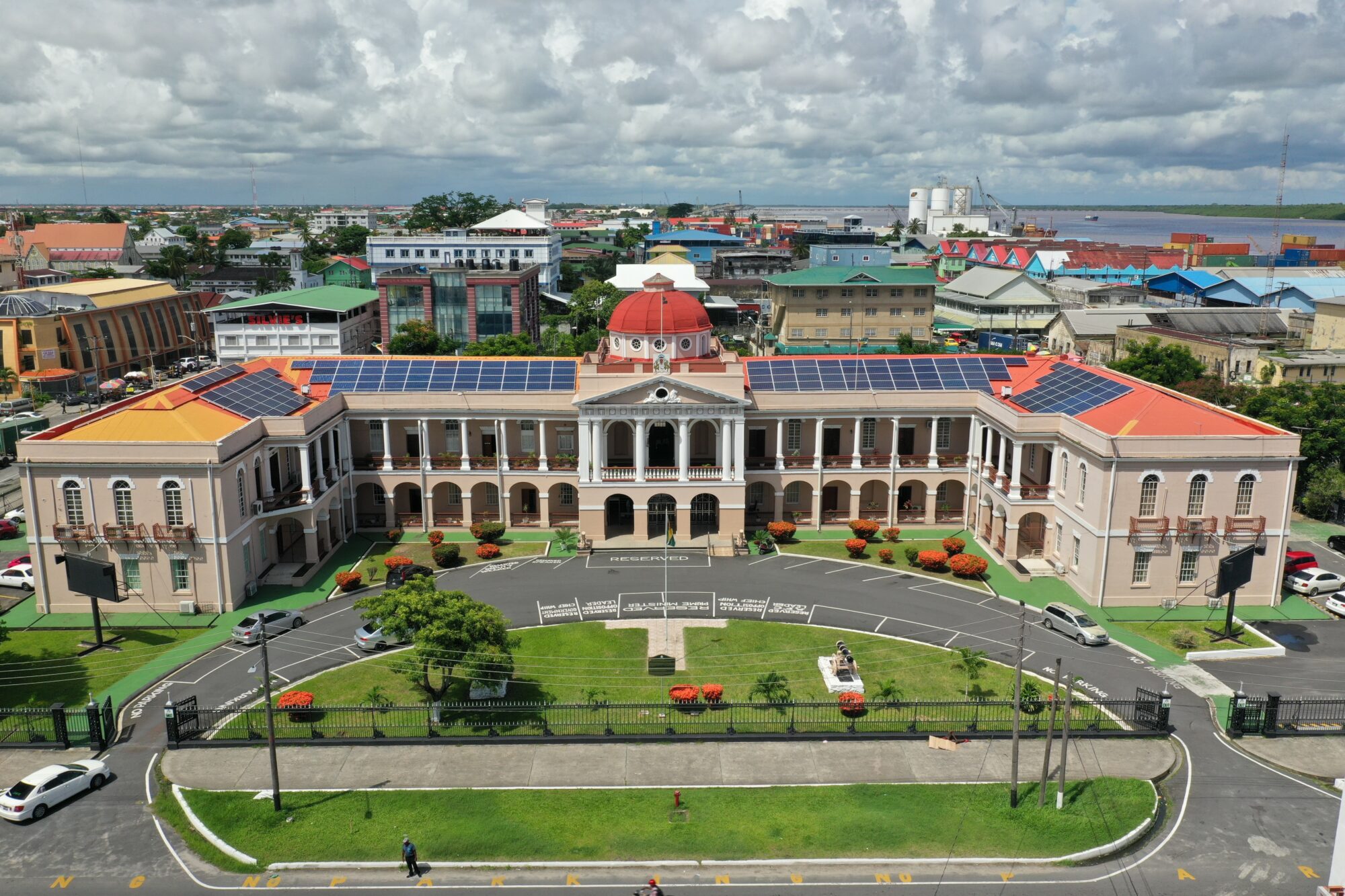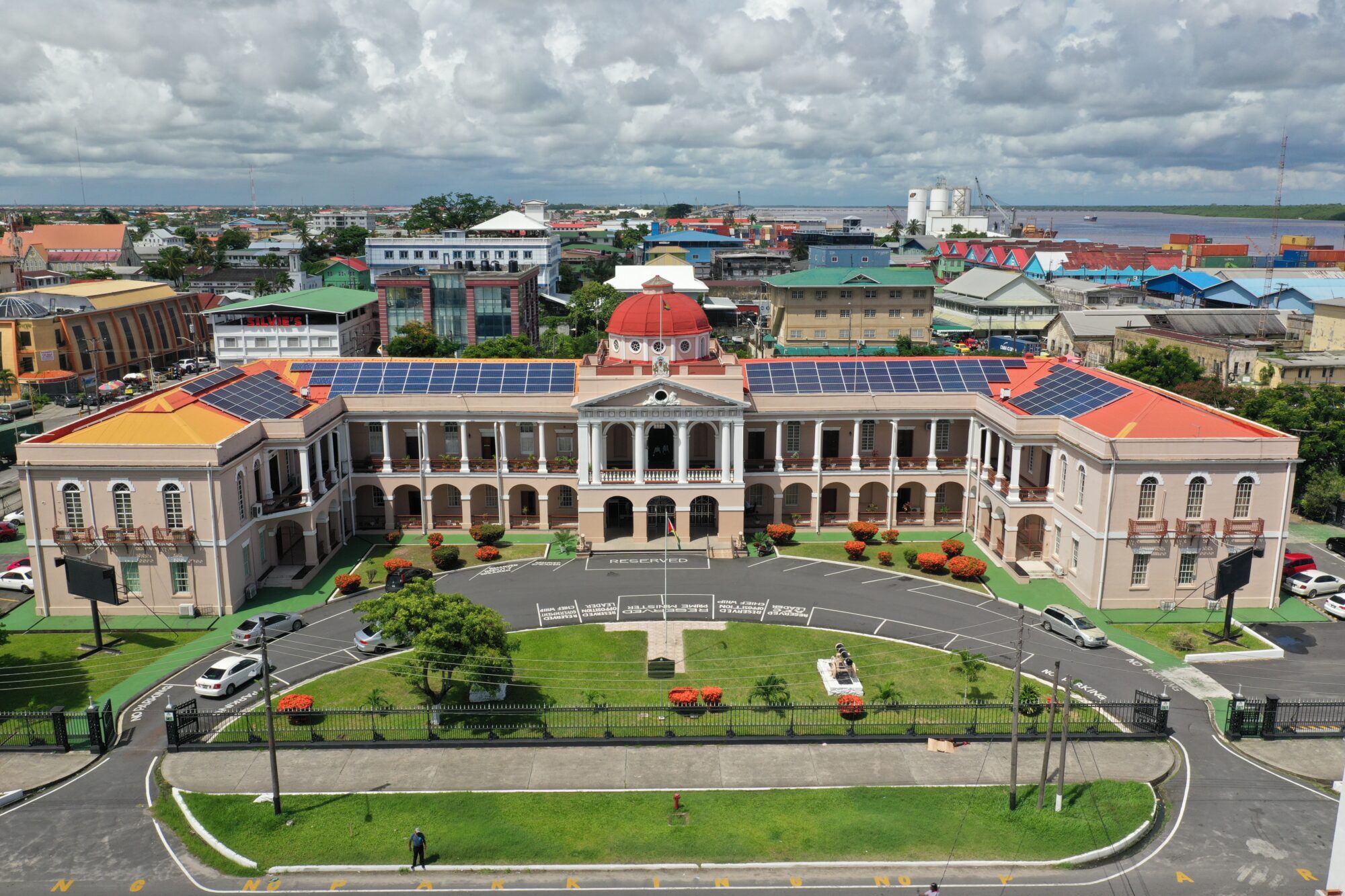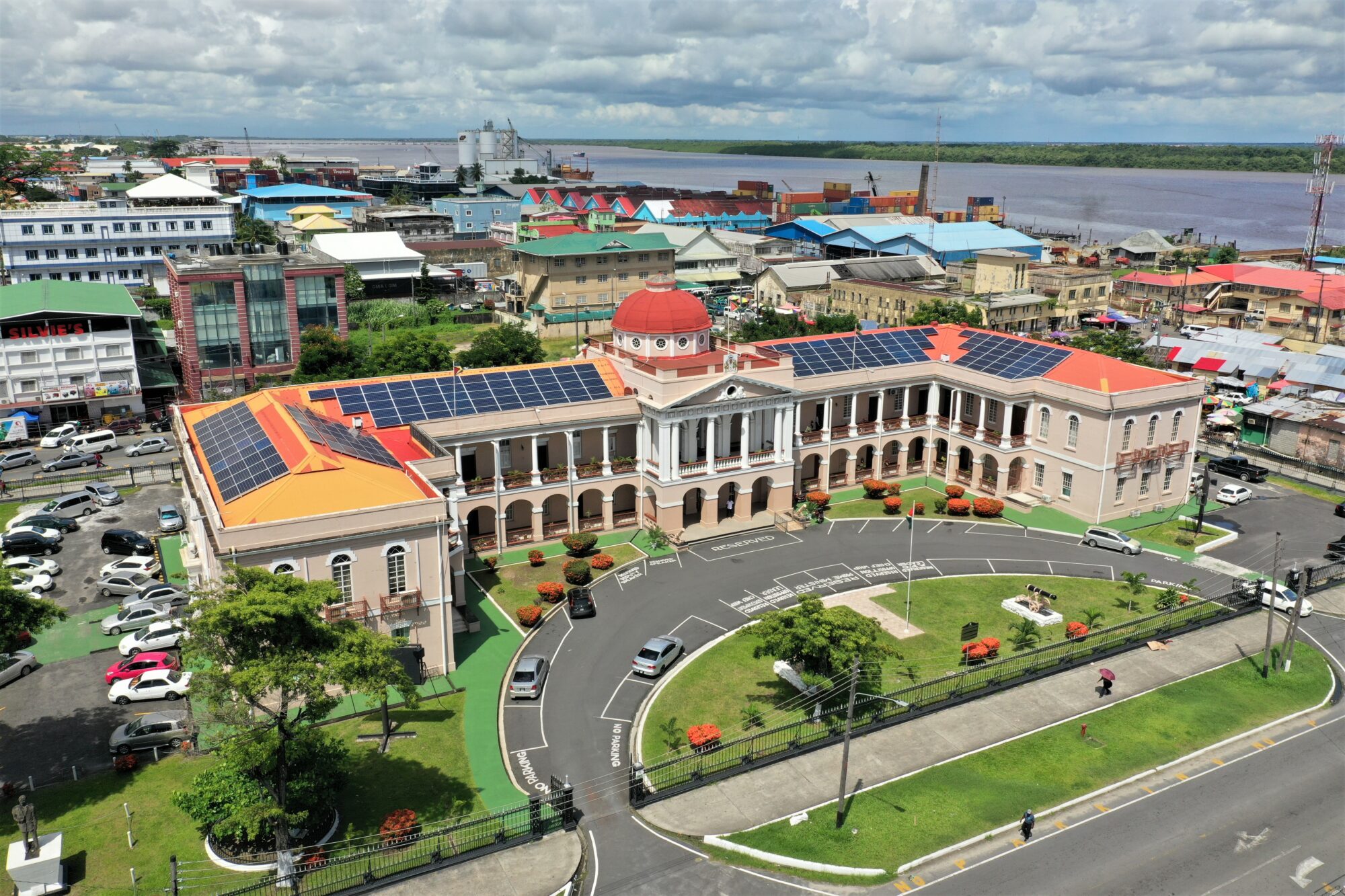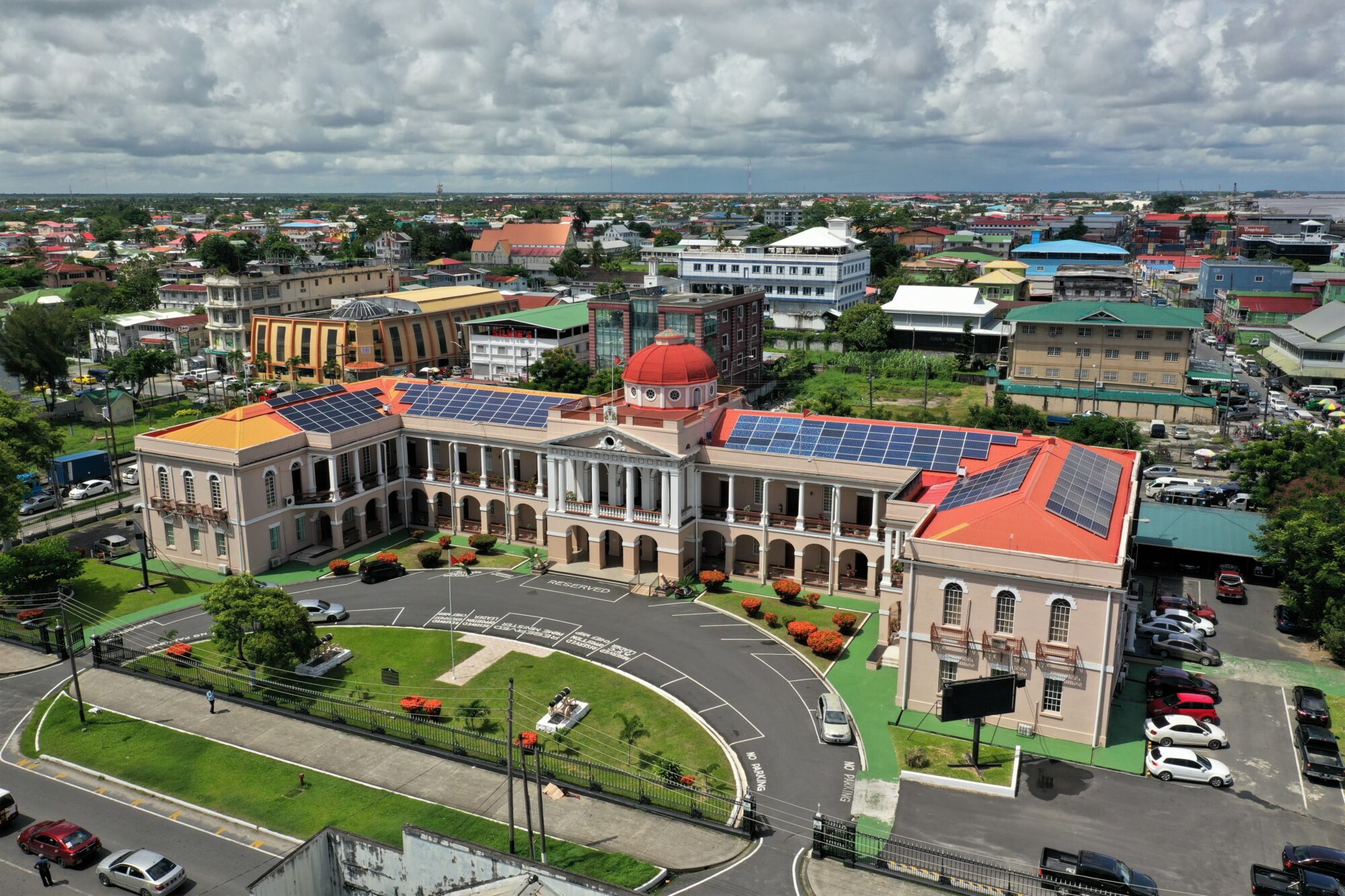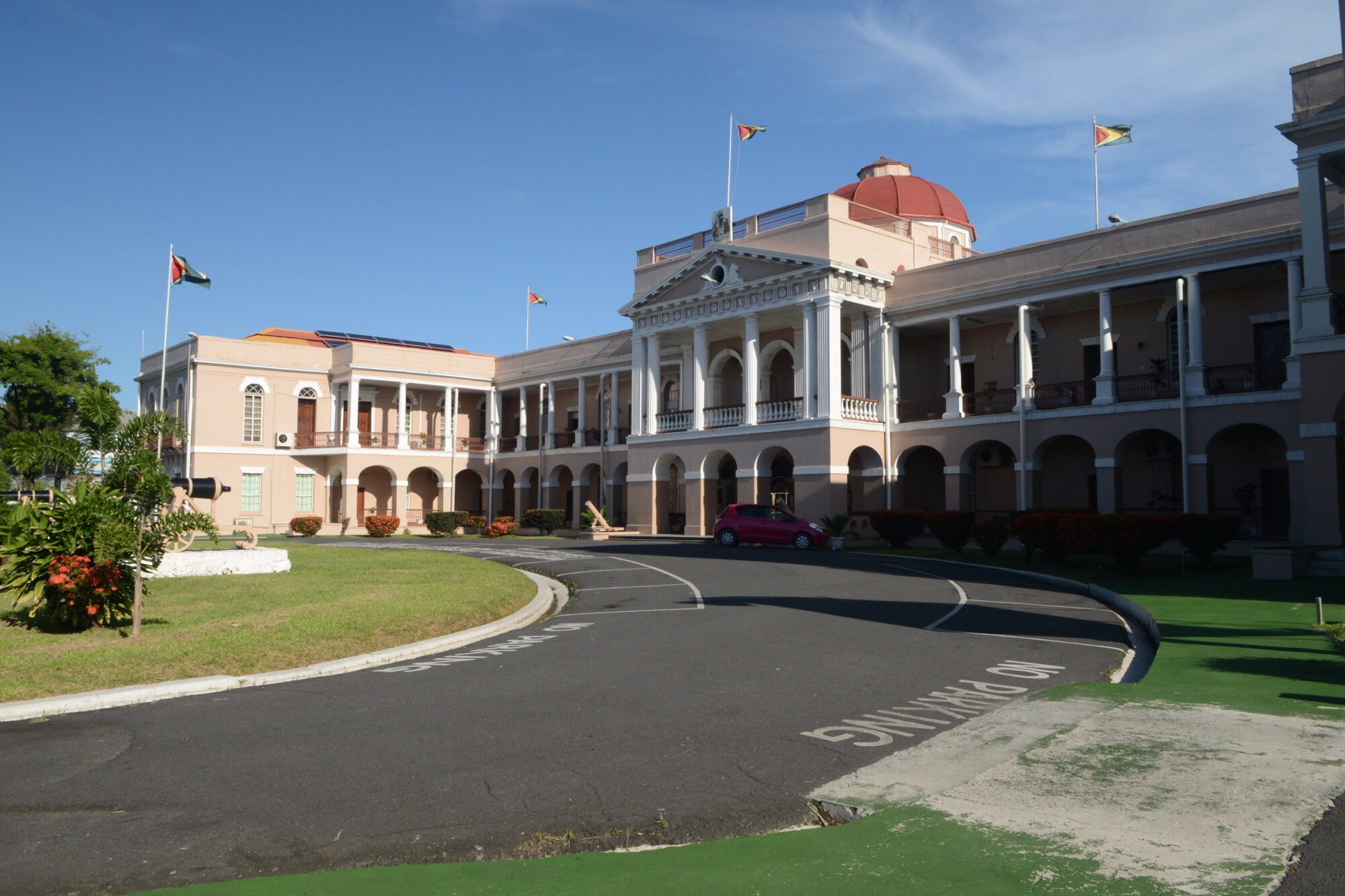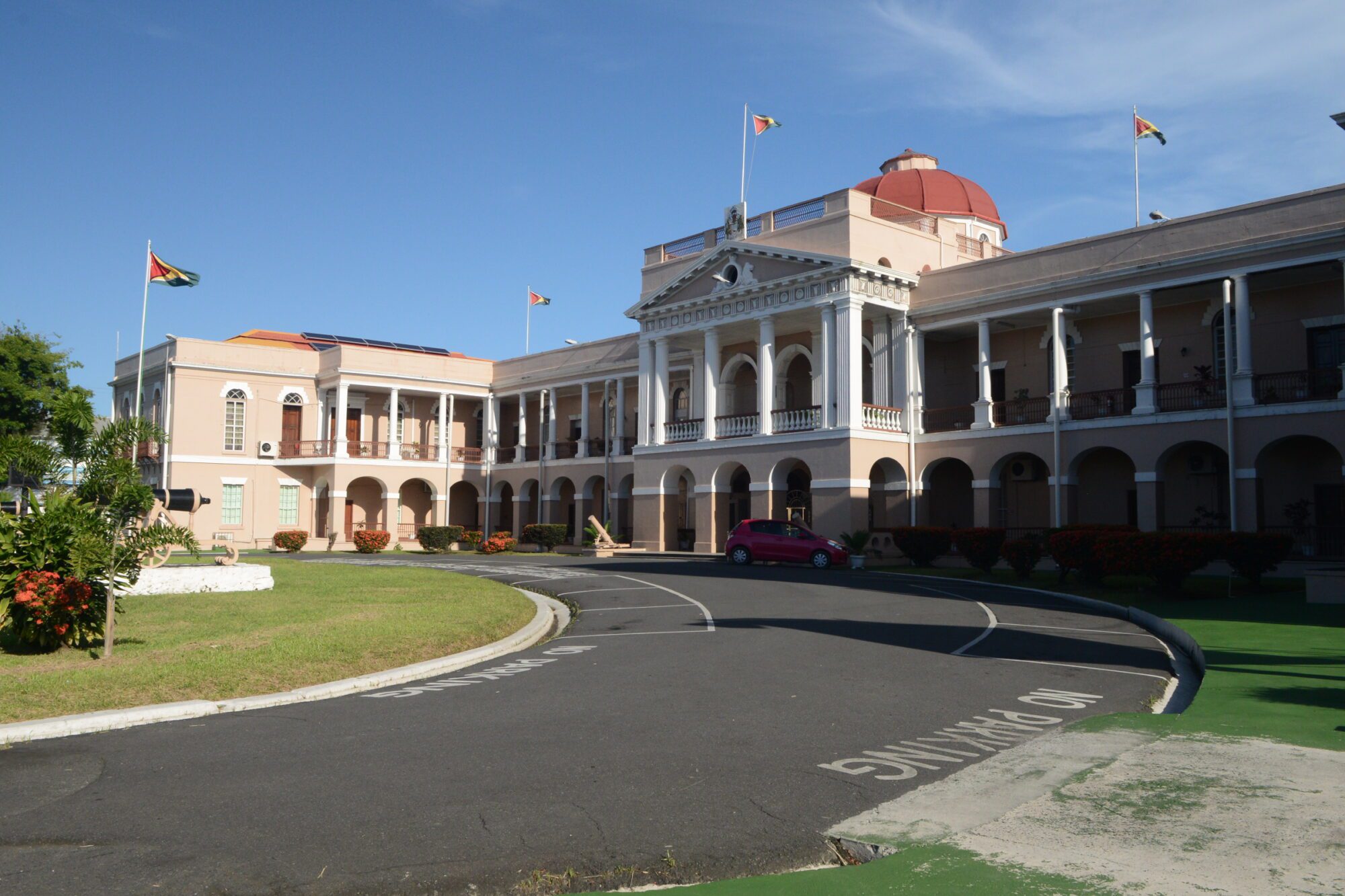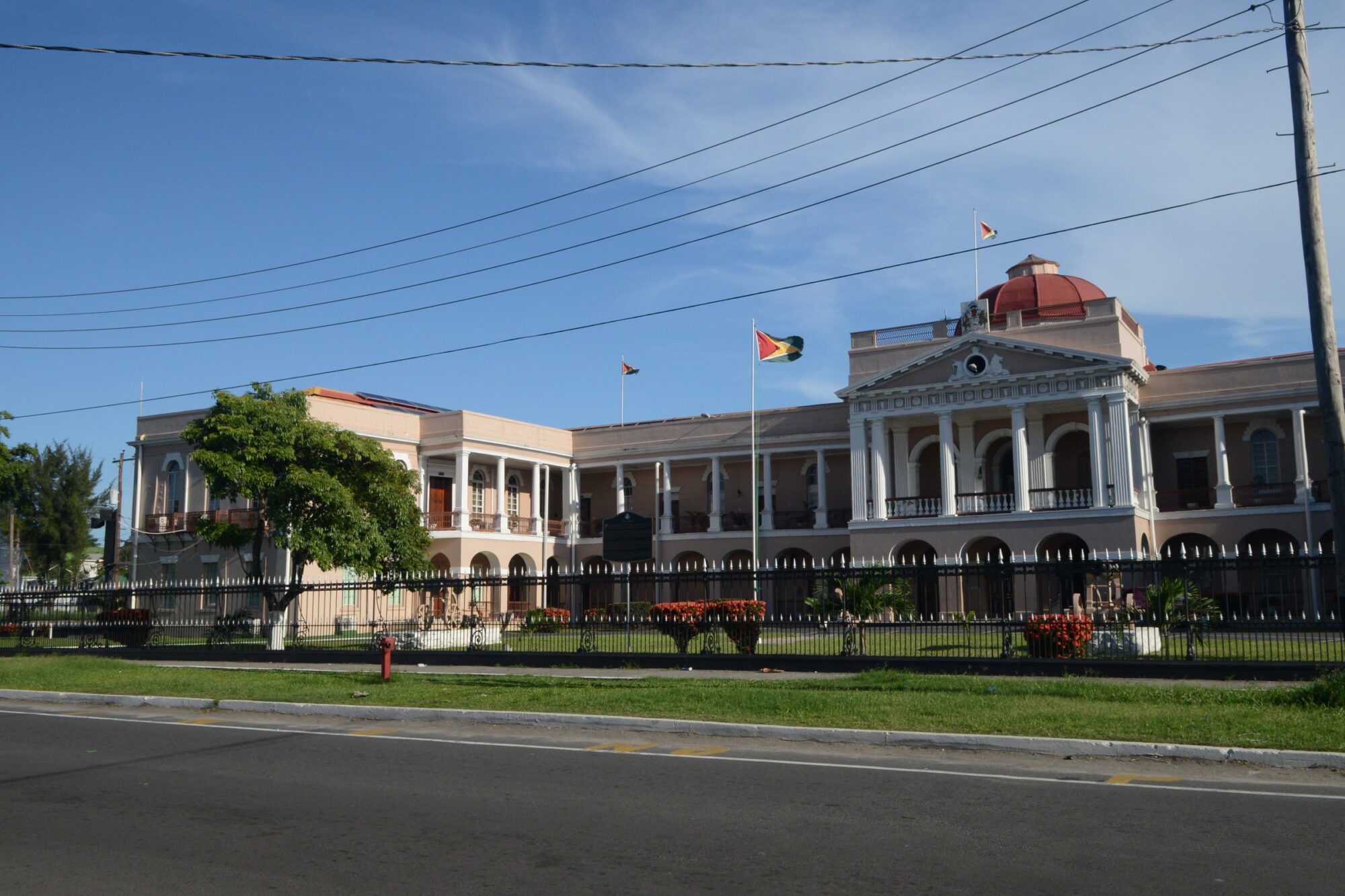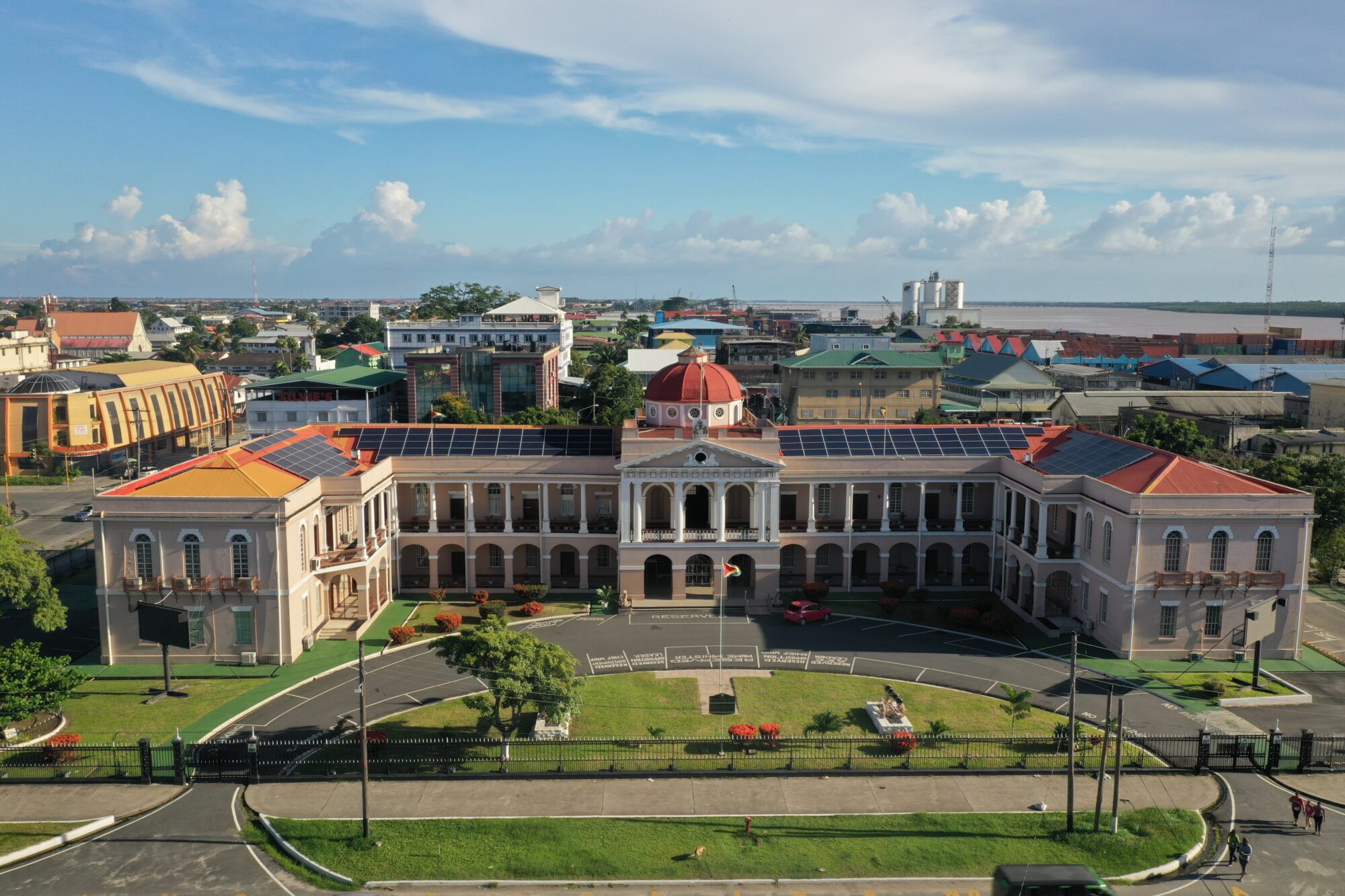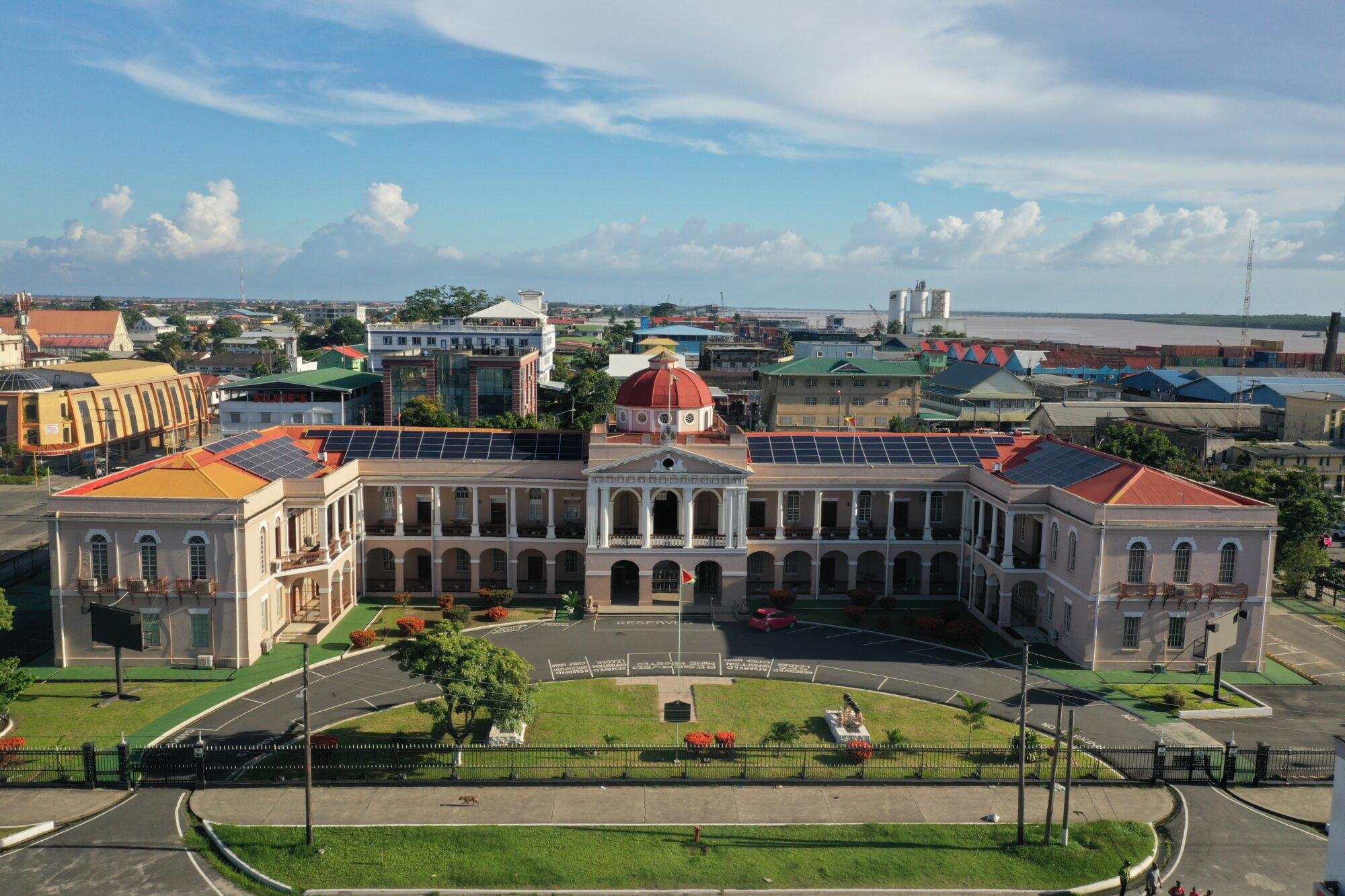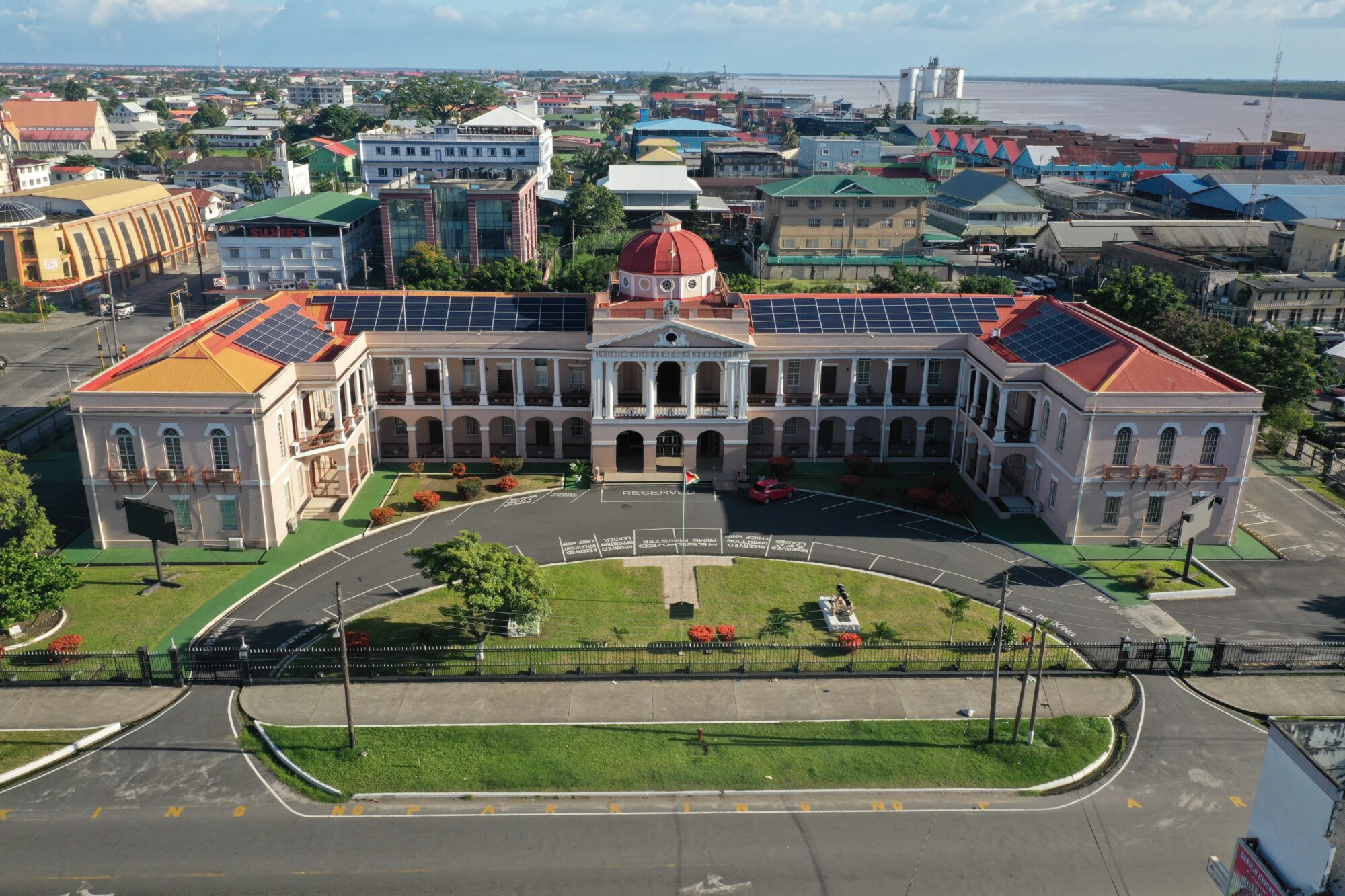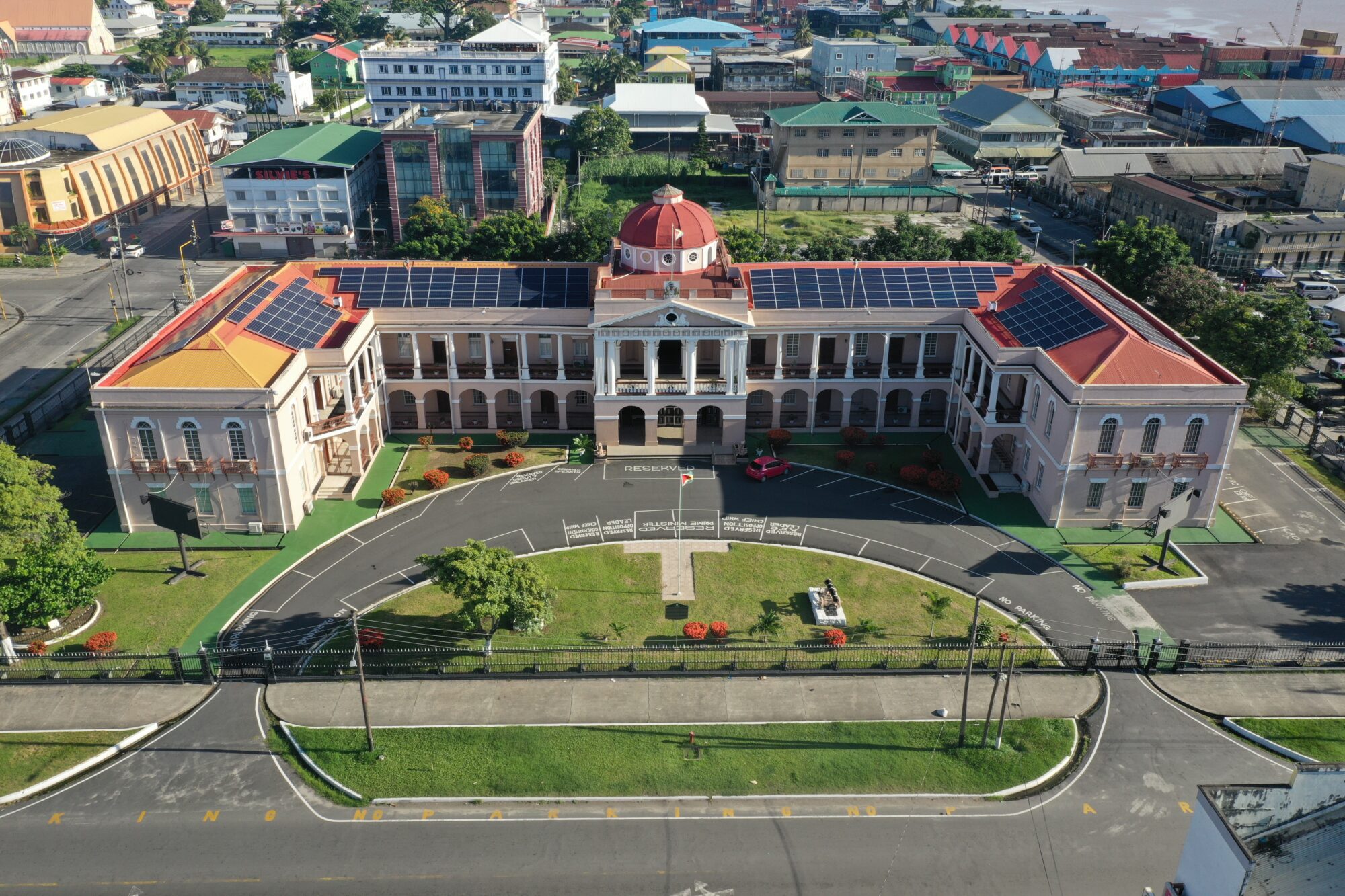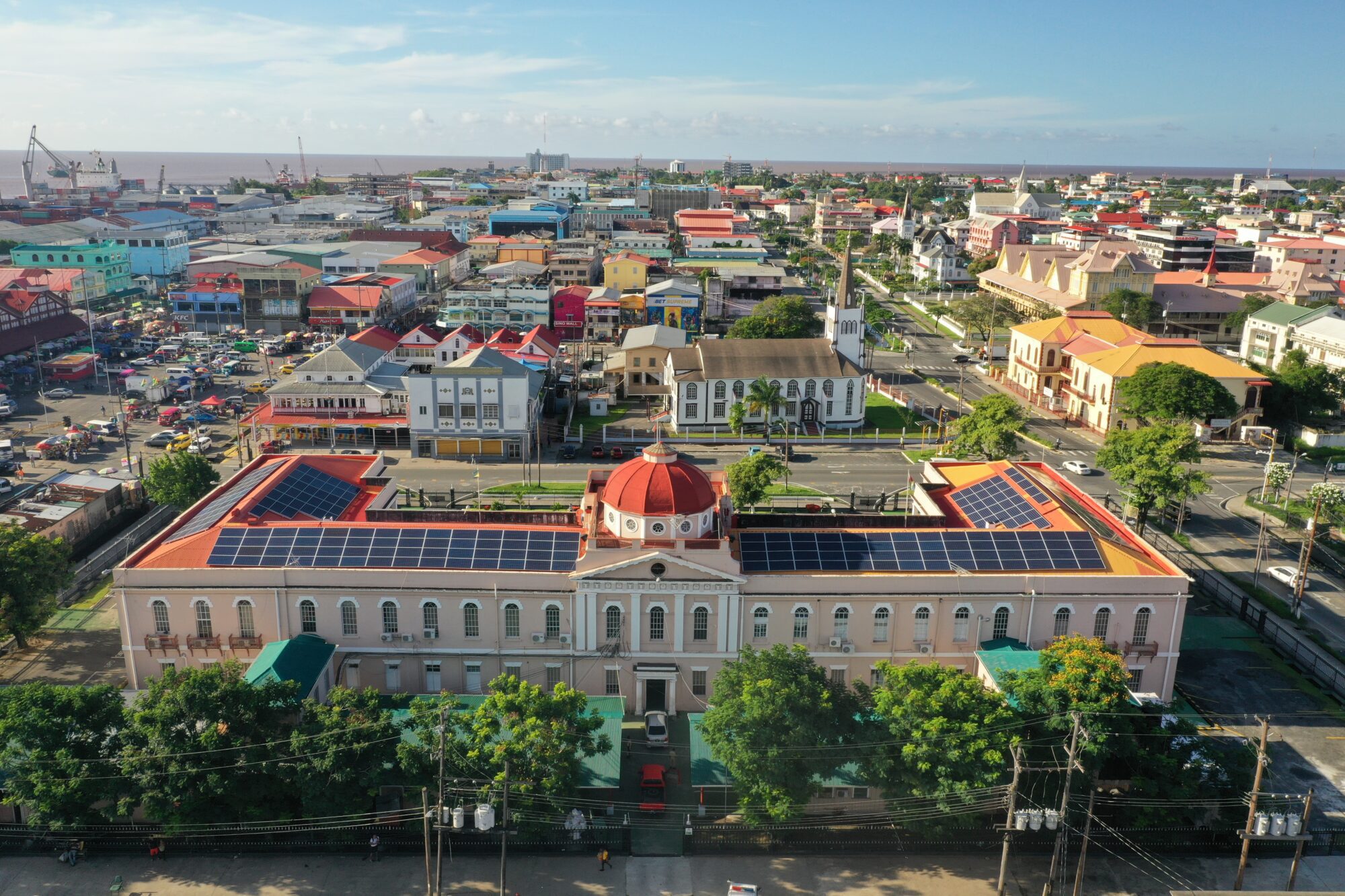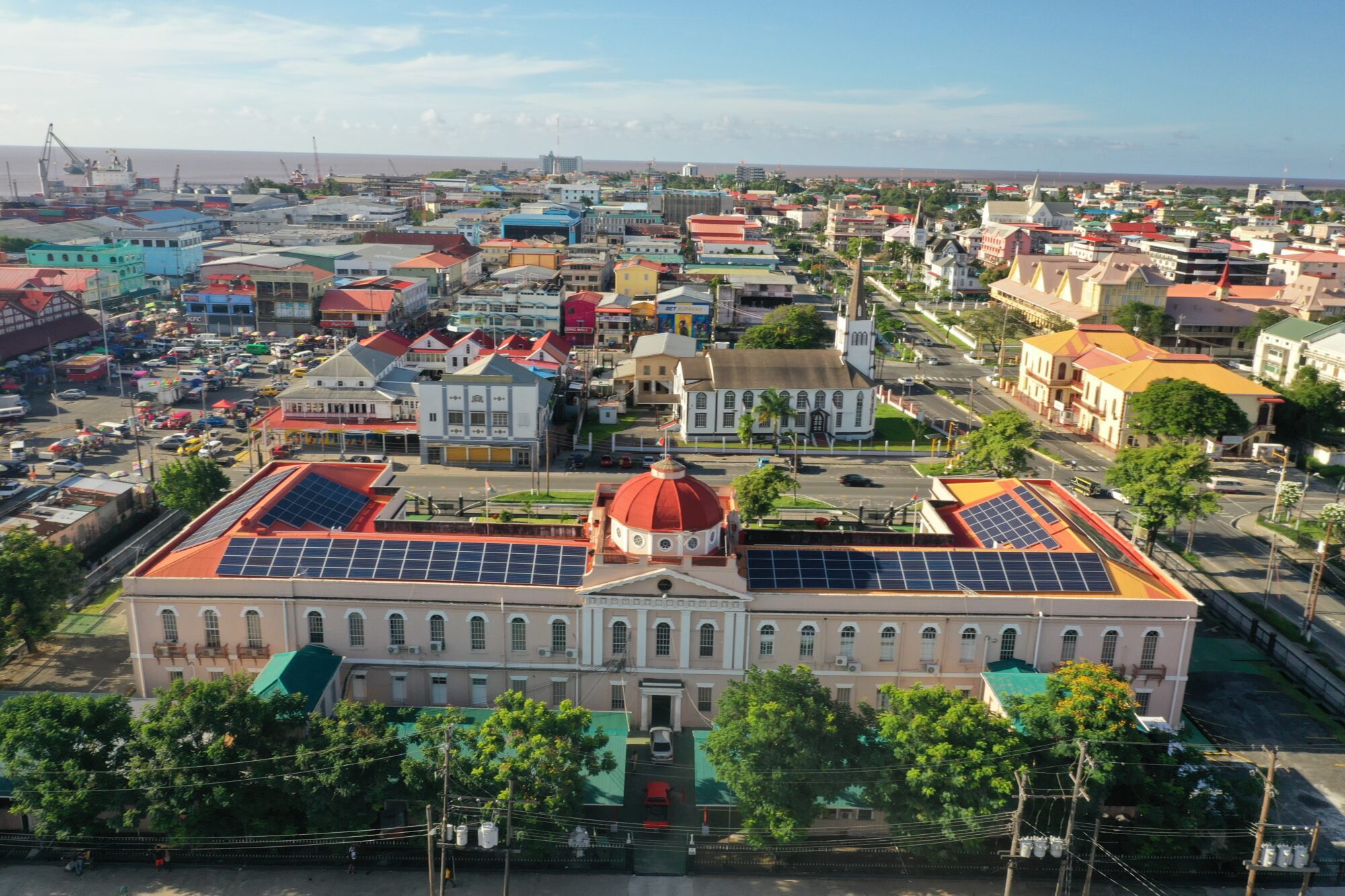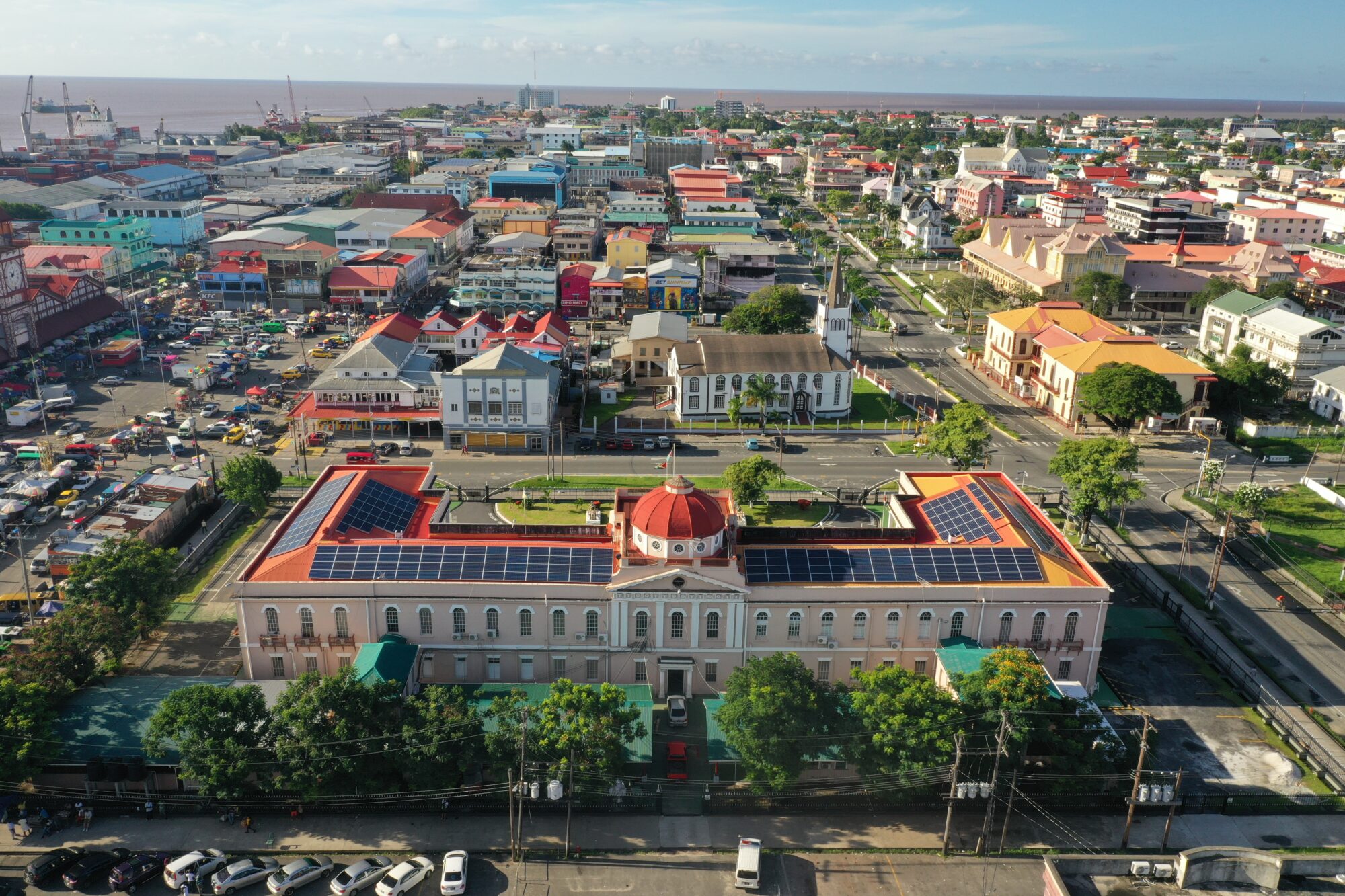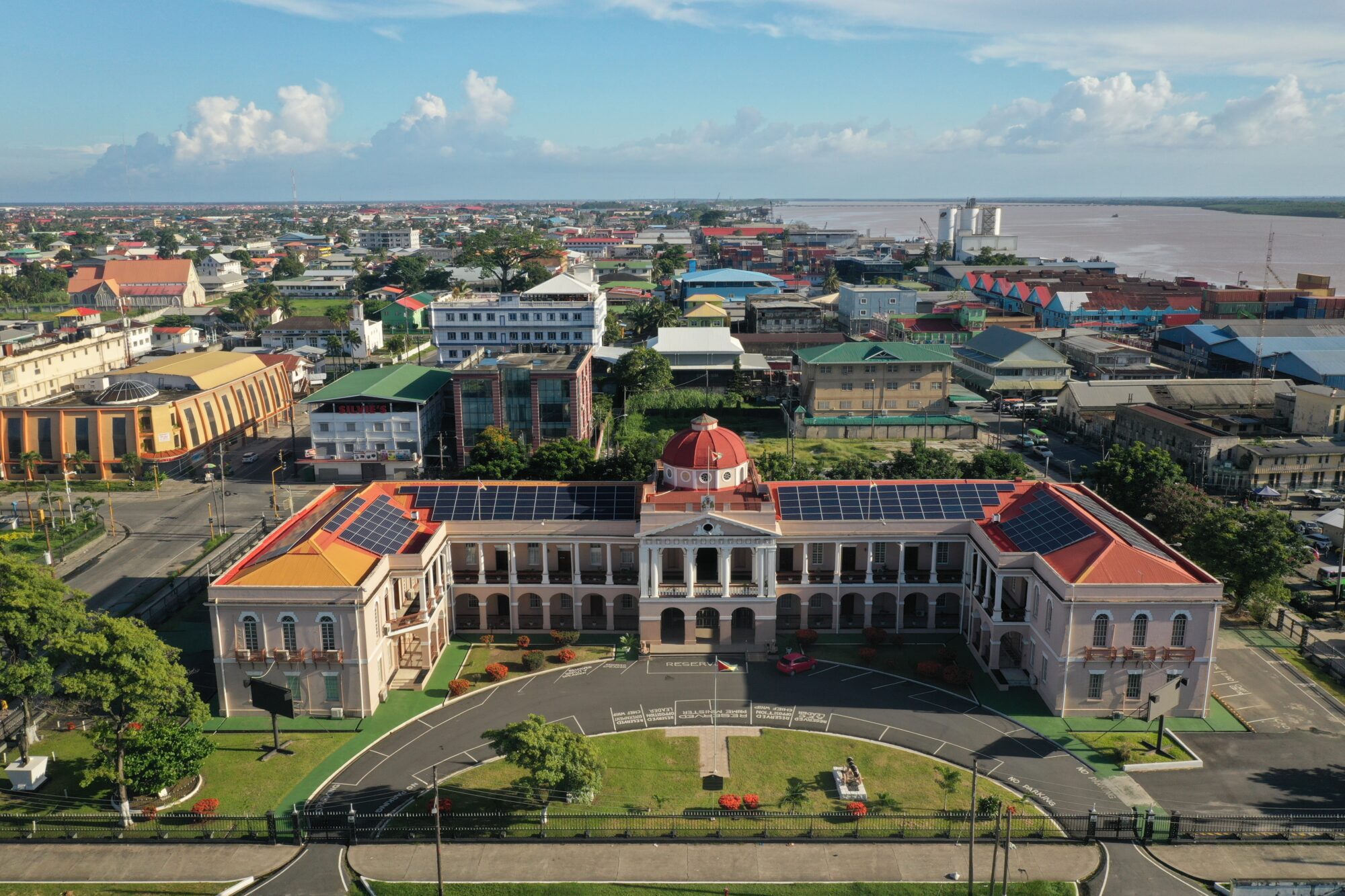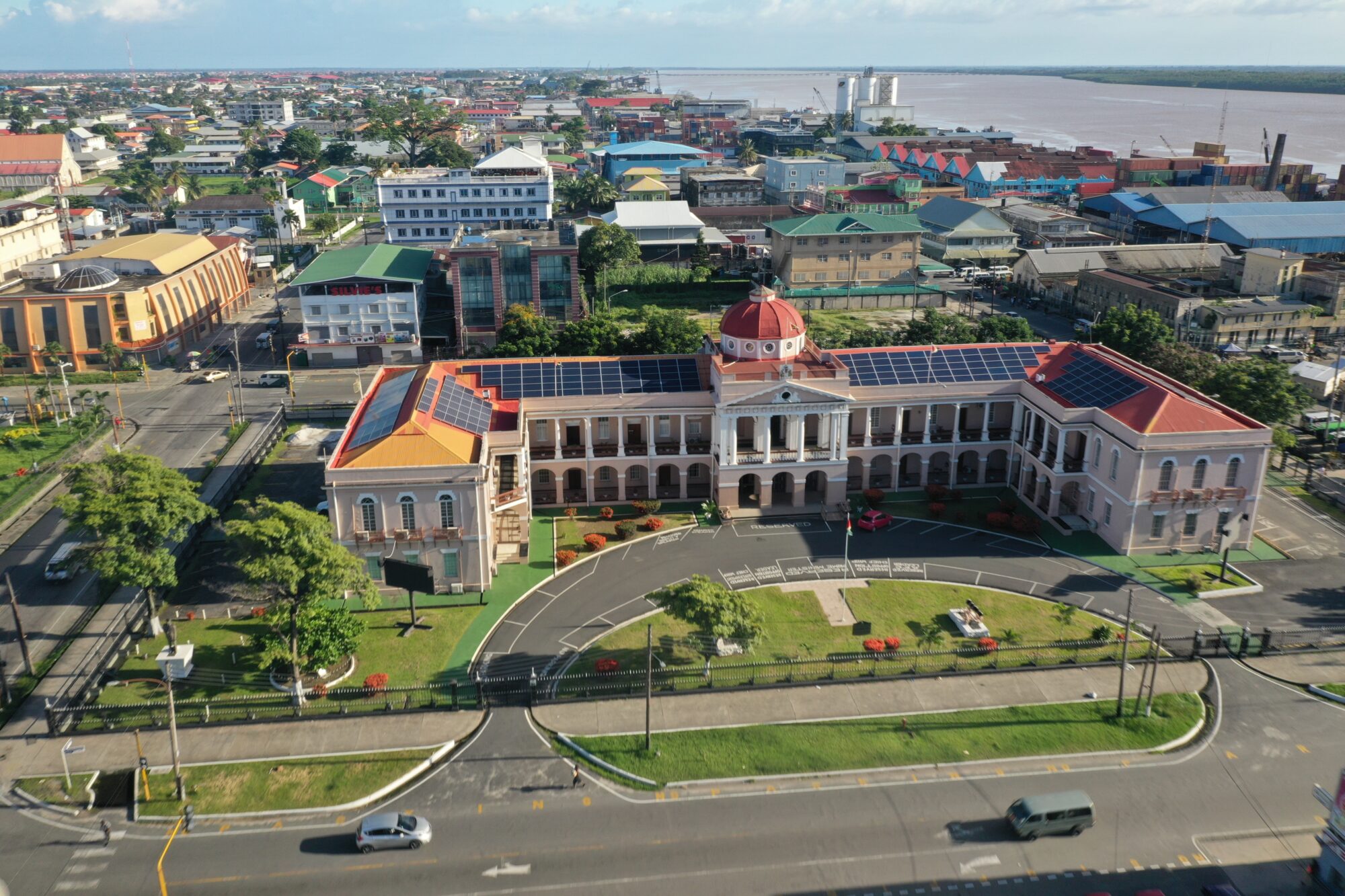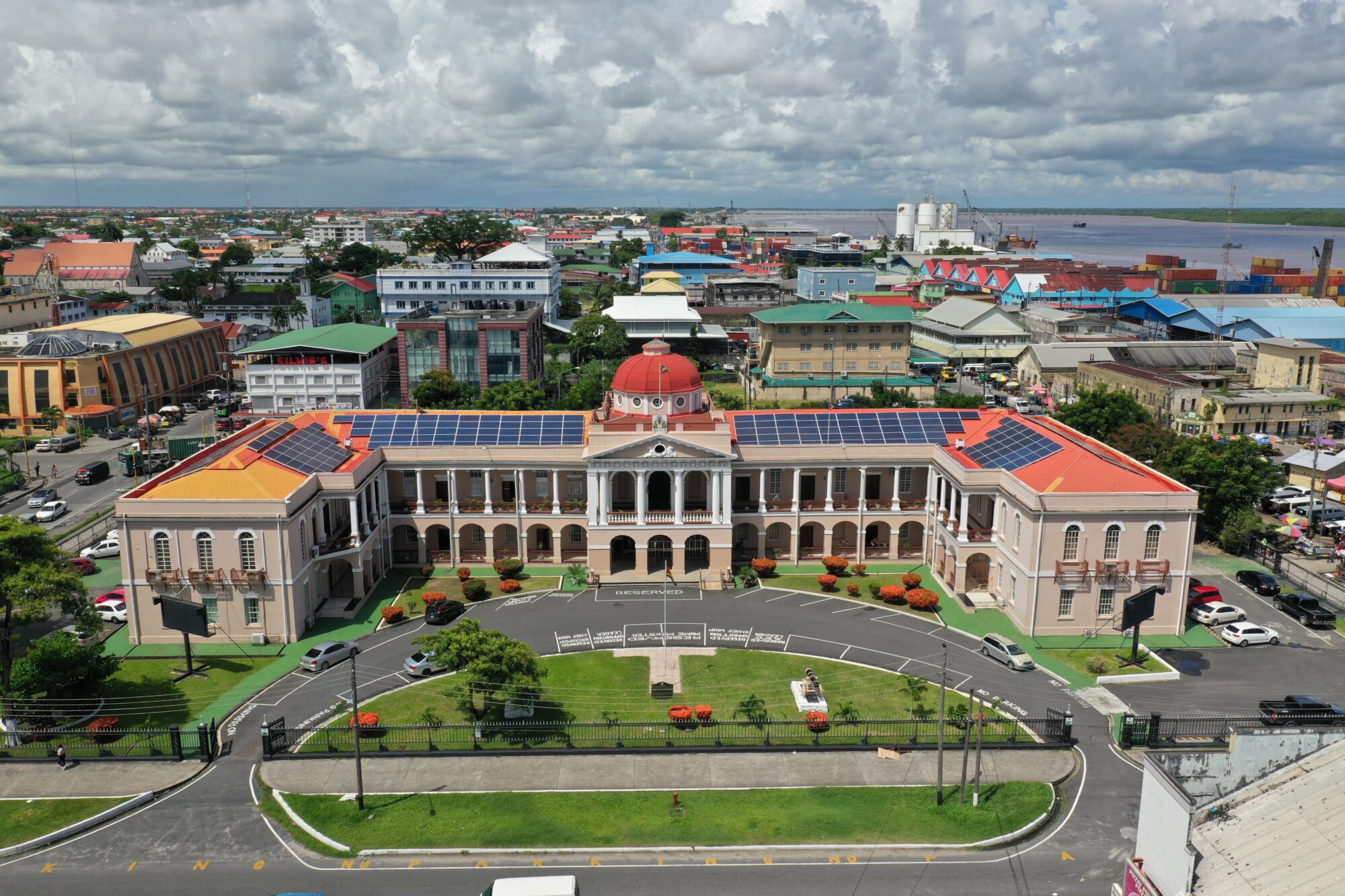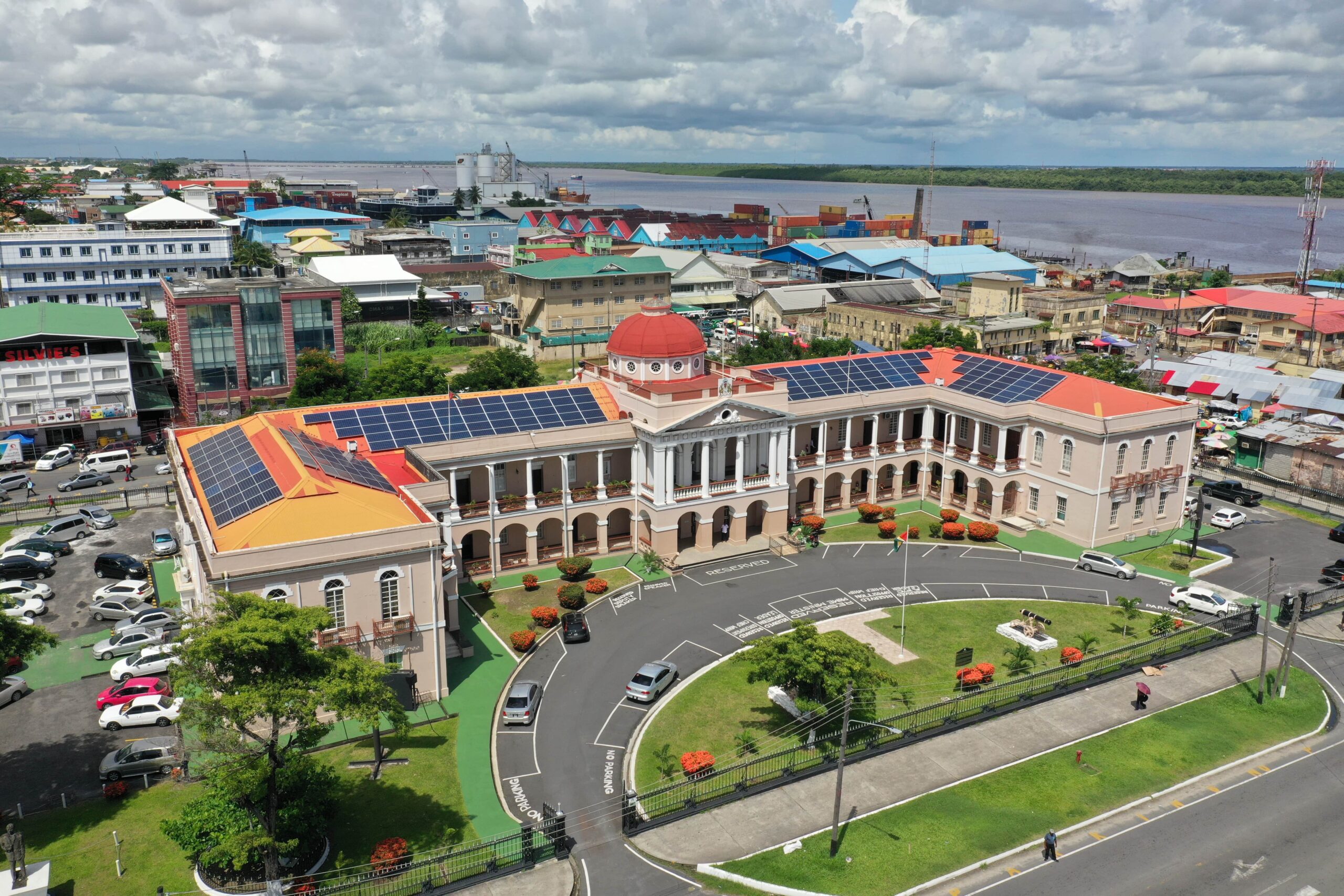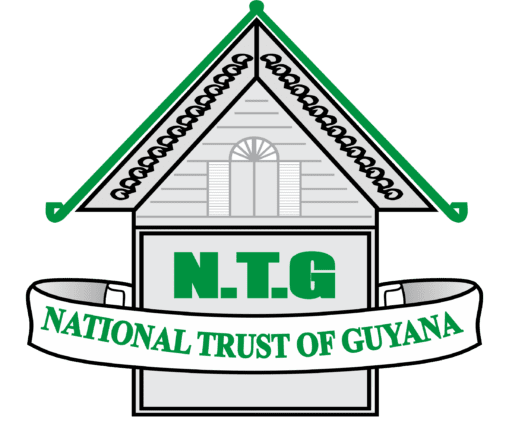Location: Stabroek, Georgetown
Classification: Community
Period/ Year Built: 1834
Historical Background / Description:
Public Buildings, also known as Parliament Building, is located with its main façade facing Brickdam; the site is bordered by Hadfield Street on the south, High Street on the east and Cornhill Street on the west. Parliament Building currently houses the seat of the National Assembly of the Government of Guyana.
Designed by architect Mr. Joseph Hadfield, the present building is the second to be erected on the site since the judicial system moved from Essequibo to Demerara. The first Public Buildings fell into a state of disrepair and a petition was laid before the Court of Policy for a new building. This new structure was constructed and completed by February 21, 1834 and was handed over to the Court of Policy on August 5, 1834.
August 1, 1838, was a very important day in Guyana’s history as influential members in society, the military, the common residents, slaves and servants stood on the lawns of the Public Buildings as the proclamation declaring the abolishment of slavery was read. Over a year later, on November 7, 1839, 83 emancipated slaves strolled on to the lawns of Public Buildings with 30,000 guilders to purchase an abandoned plantation named Northbrook, now known today as Victoria.
The building has features of the Neoclassical Architectural Style, with its simple geometric shape, minimal decorations and main façade lined with rows of classical columns. Other notable features are the central dome over the main stair and a portico with a centrally placed oculus in its pediment decorated with the Royal Coat of Arms (unicorn, lion and crown).
The Hubert Nathaniel Critchlow Monument, located in the compound of Public Buildings, was unveiled in memory of Hubert Nathaniel Critchlow, who is considered the Father of the Trade Union Movement in the Commonwealth of Nations. The Monument which consist of a bronze statue was sculpted by E. R Burrowes at the request of then Premier of British Guiana, Dr. Cheddi Jagan. Also found within the compound of Public Buildings are a number of 19th and 20th century cannons. At the main entrance of the building is a pair of 8 inches German Trench Mortars that were taken as trophies during the first World War (1914-1918). At the forefront of lawns is a pair of 7 inches’ Russian cannons designed and casted during the period 1825-1827. These cannons were presented to British Guiana on May 10, 1859.
